

The World Seemingly Has Changed Overnight: Countries and Markets Struggle with the New Global Fundamentals
• Globalization is not dead – it’s being ”Strategically Restructured:” Trade tensions between China and the US/EU/IndoPacific have triggered a strong embrace of Industrial Policy major free market nations for the sake of “national economic security” (e.g., CHIPS Act in the US and EU, competition for critical mineral assets, etc.).
• Demographics are changing everything: India is now the largest population in the world as China begins to rapidly shrink. Africa is the fastest growing region of the world. Japan and many EU nations are seeing significant long-term shrinkage of their populations but are seeking to make up for it with immigration – as is the US. As for Russia: It is in a catastrophic demographic free-fall. (Example: More than 100,000 IT professionals left in 2022. Worse, an estimated 900,000 Russians total have fled since the war started out of a total population of 142,000,000).
• Russia’s invasion of Ukraine changed everything: Geopolitical relations are in a state of flux in ways we have not seen since World War II. Moreover, global markets and businesses continue to scramble more than ever to adjust their strategies due to the impact on key sectors.
Ø In Summary: We are in a new age where the global and regional battle for access to commodities – especially critical minerals, agricultural, water, etc. – are driving what we could consider new Cold Wars - as well as real wars.

Sources: BBC, Fortune Magazine, Newsweek, Wall Street Journal, Worldometer 1
The Year of Elections –
76 in 2024: Change is Coming…

In 2024, more than half of the world’s population will have the opportunity to head to the polls to vote. That is more than 4.2 billion people having the opportunity to cast a ballot – the most in history. This includes eight of the ten most populous countries:
• The United States
• India
• Russia
• Brazil
• Indonesia
• Mexico
• Pakistan
• Bangladesh
2024 also brings new leadership to most global/regional organizations which have large global markets:
• G7: New Chair: Italy
• G20: New Chair: Brazil
• APEC: New Chair: Peru
• ASEAN: New Chair: Laos
• BRICS: New Chair: Russia
• CIS: New Chair: Russia
• NATO: New Secretary General by October 1
• EU: New Chairs: Belgium (January – July); Hungary (July - December)
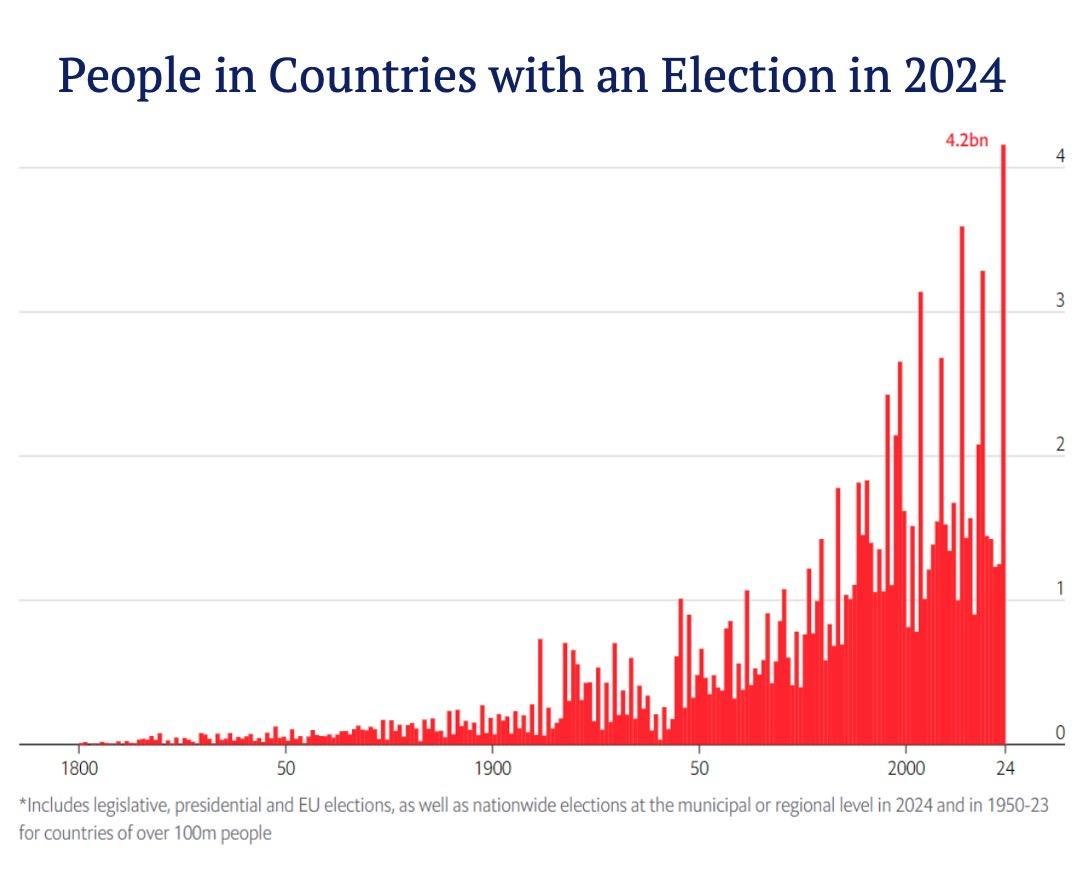
Source: The Economist
The New China: No Longer Destined to Dominate and Struggling With Major Economic and Social Risks
• The 20th Chinese Communist Party Congress in 2022 granted President Xi Jinping an unprecedented third term. In his acceptance speech, Xi’s focus: “Security.” He said the word 96 times. This demonstrates his views that the rest of the world is hostile to China – but it also goes to his worries about what is going on inside China.
• The Taiwan Invasion Risk: Worrisome but not likely in the next three-to-five years. US assessment: An invasion would be Xi’s “last, worst choice.”
• A major casualty of Xi’s policies is the impact on the regional and global markets investing in China: Foreign Direct Investment has nosedived. And there is less transparency overall, especially of key economic data. This has been the trend under Xi for the last 12 years and is continuing.
• Watch the youth unemployment rate: Officially, it is at 21.3%. The real number is likely close to 30% and may be trending toward 40%. But we will never know because Beijing just suspended all reporting of that data.

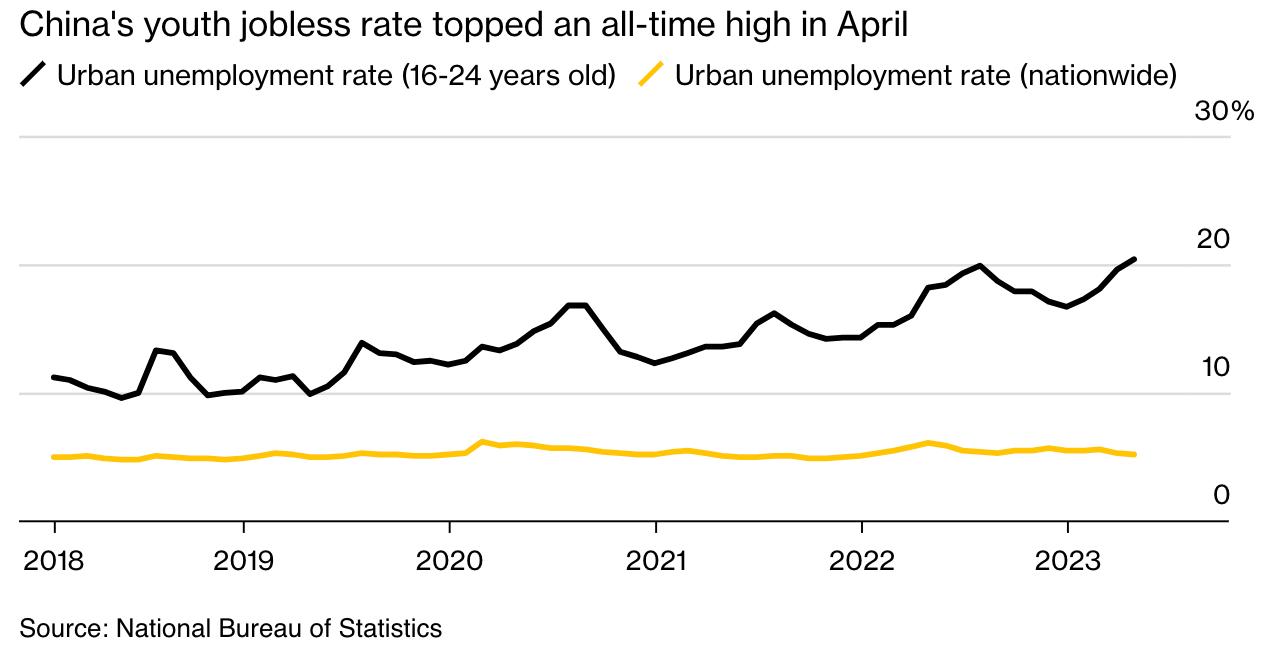
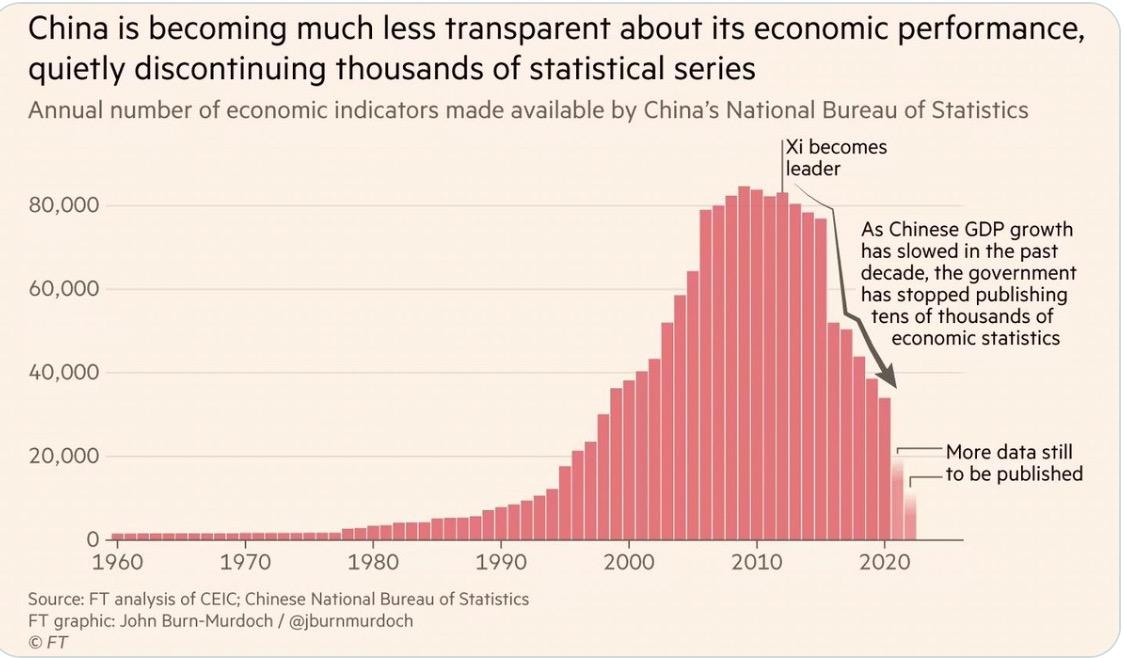
Financial Outflows from China Continues to Grow
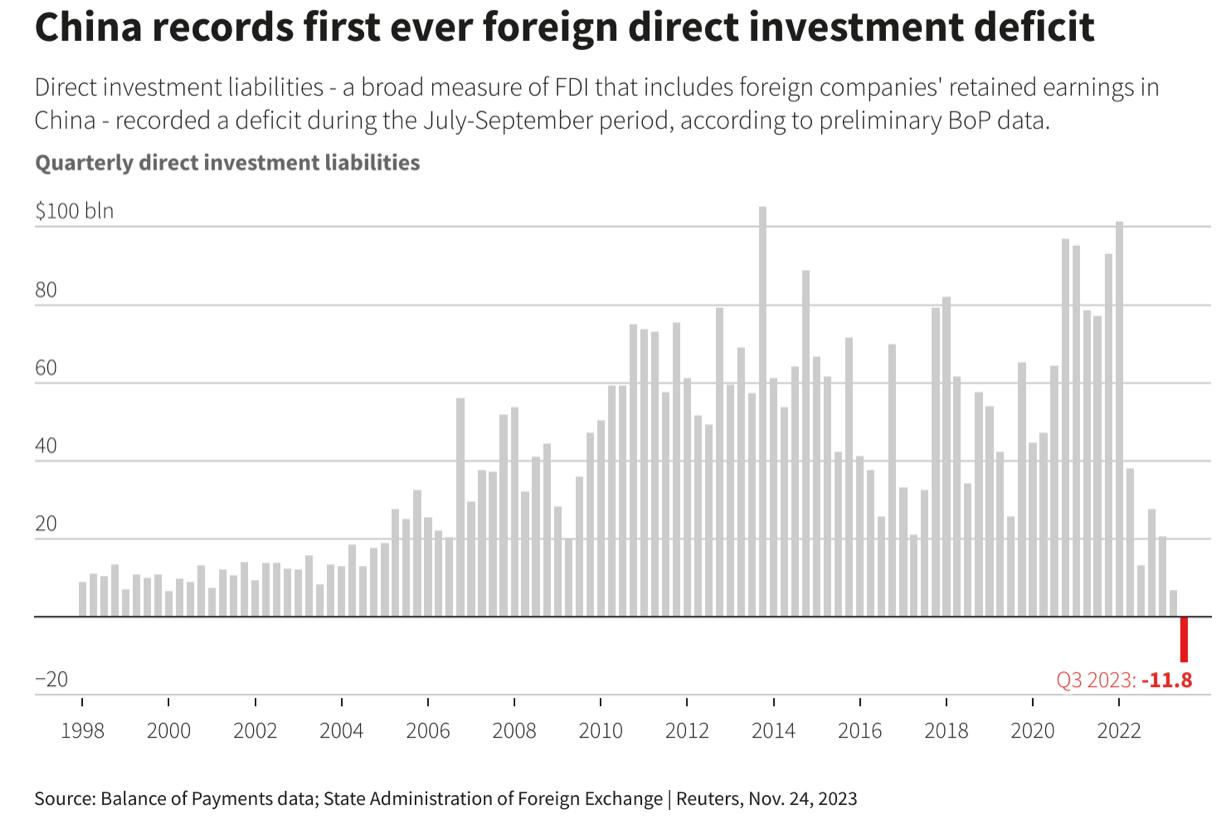

Nearly 90 percent of foreign money that flowed into China’s stock market in 2023 has already been pulled.
China’s Population Challenge: It is Not Getting Better Anytime Soon
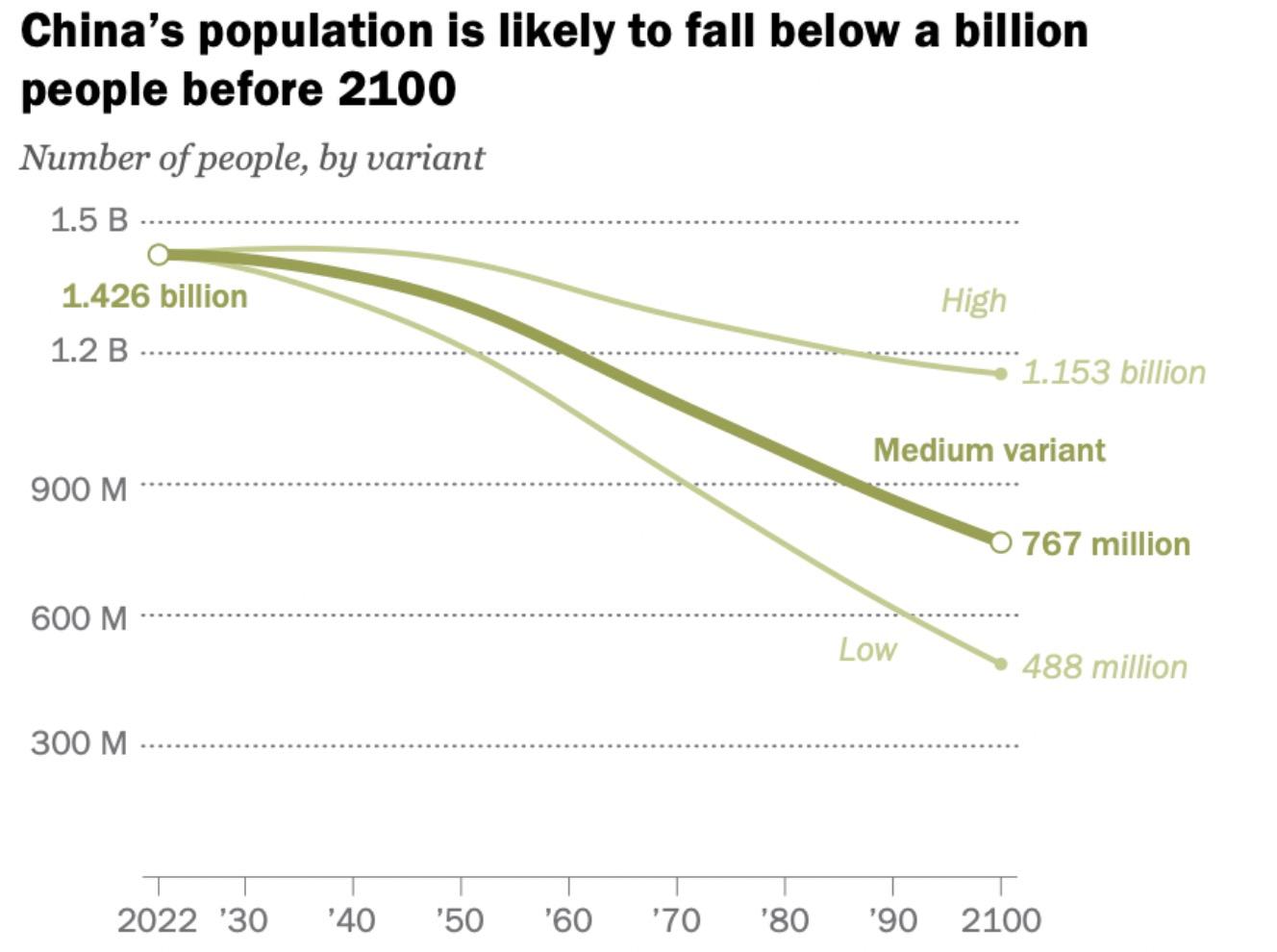

By order of comparison, by 2100
India is expected to have a population of 1.5 billion and the US is expected to have a population of 370 million.
Source: Gallup
China’s Loss is India’s Gain: Rise of a Quiet New Superpower
• India is expected to be the fastest growing economy in 2024, experiencing 7.2 percent growth so far in 2022-2023. Its population is now larger than China’s, with the average age being 33 years old.
• We are beginning to see a serious outflow of manufacturing from China with a substantial amount of it moving to India. The reasons for going to India?
Ø Low labor costs
Ø Government support/subsidies
Ø Infrastructure
Ø Technology
Ø Education
Ø Rule of Law
Ø Not Communist…
• India is in a growing relationship with the US – he has strong relations with both President Biden and former President Trump.
• Modi is also building key Indo-Pacific allies (Japan, South Korea, Australia, Philippines) economically and militarily to counter China.
• The Quadrilateral Security Dialogue (Quad) is potentially the groundwork for a future mutual security/trade alliance between India, Australia, Japan, and the US.

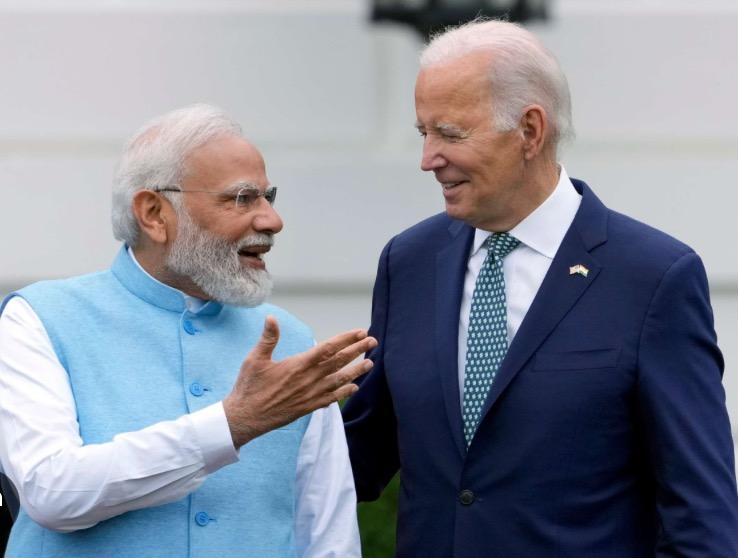

The Middle East: The Horror of 10/7 and Iran’s Attack this Weekend
• The grotesque attack on Israeli citizens on October 7 and Iran’s unprecedented attack on Israel this weekend has massively changed the political and military reality in the Middle East for decades to come. What should we expect going forward?
Ø Israel: The overarching question has been what is Israel’s Gaza strategy? Occupation? Returning to a walled-off Gaza? Do they attack Rafah? Now, the question is how big will Israel’s response be to Iran’s attacks. There is deep discontent among Israelis toward Prime Minister Benjamin Netanyahu. A recent poll showed 71 percent of Israelis think he should step down now and more than half want elections this fall.
Ø Iran: This was a massive blunder by Iran. They had been thought to be too fragile internally and have too much to lose (control of Southern Lebanon and potential further internal unrest). Most of all, they cannot afford to lose their oil revenues.

Ø Other Middle Eastern Countries: Jordan took the extraordinary step to open their airspace to the Israeli, US, and UK Air Forces to destroy incoming drones/cruise missiles. They also participated. Watch for what Saudi Arabia and the Gulf States say and do now in response. Also, note the muted response from most Arab states over Gaza.

Source: BBC, Congressional Research Service; the Times of Israel
Where is Supply Chain Risk? 60% of Fuel, Food, and Cargo Travels Via Sea and Squeezes Through These Eight Chokepoints – Four Are In War Zones
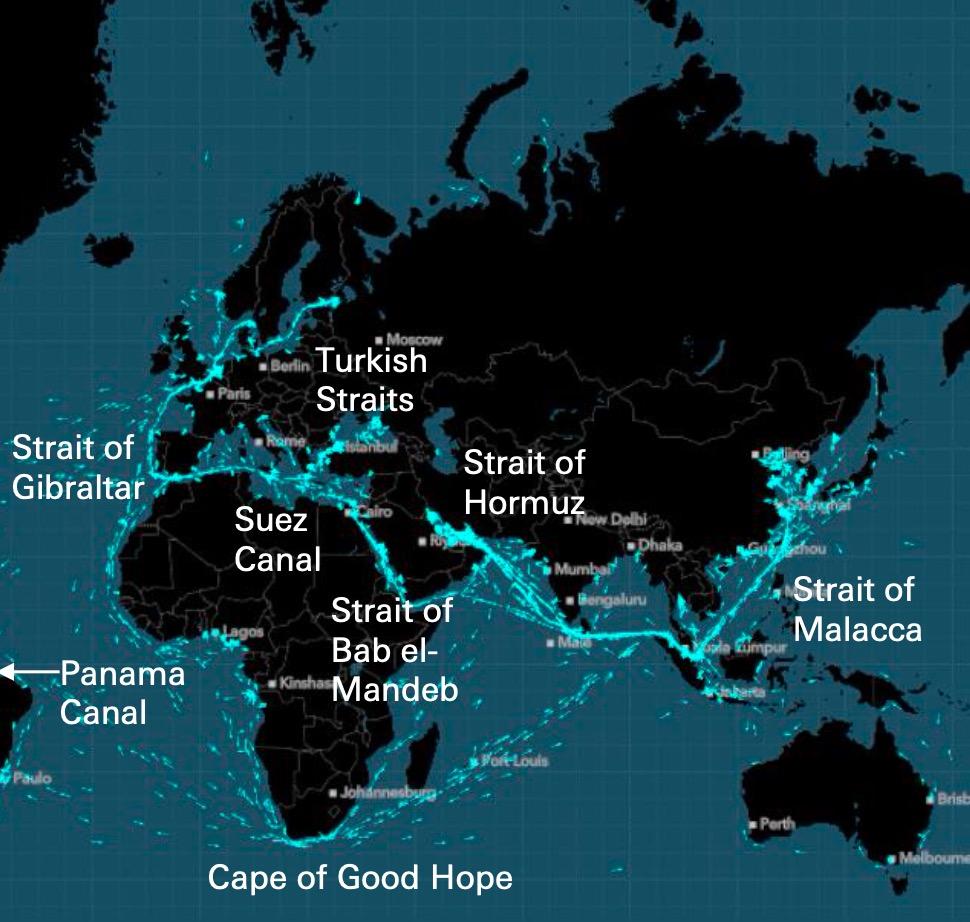


Source: Deutsche Bank Research; Bloomberg, US Government Sources 9
The Ukraine War is Becoming the Endless War
• While Ukraine’s recent counteroffensive was incrementally successful it came nowhere close to defeating Russian Forces.
• Moscow’s strategy is now clear: A long war of attrition. According to US officials, Russia has effectively reconstituted their military capabilities, producing or acquiring new artillery, drones, shells, etc. (from Iran and North Korea) as well as mobilizing another 200,000 soldiers via a draft.
• Ukraine has had an advantage of morale, quality of equipment (which they are running out of), and operational/tactical capability. But that is wavering. They have suffered horrific losses of men (and are now considering mobilizing women to fight).
• What do the US and EU do going forward? Growing resistance to endless military and financial aid is growing. Will the West tap out before Ukraine?
• What is the risk of Russian aggression against Poland, The Baltic nations, Georgia, Moldovia, etc.?



Other Geopolitical Risks: Here is the Laundry List
FoodSecurity Crisis
• North Korea – Increasingly desperate in the wake of COVID which killed an estimated 2 -3 million people (out of a population of 25 million). Missile test launches are usually a precursor to demands for aid. Also, North Korea is now a major producer of Russian ammunition – which means, they are exporting weapons they would need to threaten the South (minimizing any war threat).
• Crisis-Induced Mass Migration – If food security issues worsen (the dissolution of the Black Sea Grain Initiative, famines in Africa and Middle East), experts worry we will see new waves of mass-migration into Europe. We are already seeing the impact in recent European elections.
• Emerging Market Debt – There are numerous emerging market countries deeply indebted to China as part of the Belt & Road Initiative (e.g., Sri Lanka, Ghana, Pakistan, etc.) and face defaulting on payment (China has spent more than $250 billion in 2023 already in bail-outs).
• Russian Asymmetrical Warfare - Underwater communications sabotage, satellite sabotage, denigrating/damaging the Ukrainian electrical grid or even Europe’s grids, tactical nuclear or chemical or biological attacks in Ukraine (doubtful/unlikely) cyber attacks, Sabotage of global food supply channels, social media manipulation and use of AI-created “Deep Fakes.”

Sources: the Guardian; Reuters; American Economic Association; Office of the Director of National Intelligence

What is Washington Going to do Between Now and the 2024 Elections?
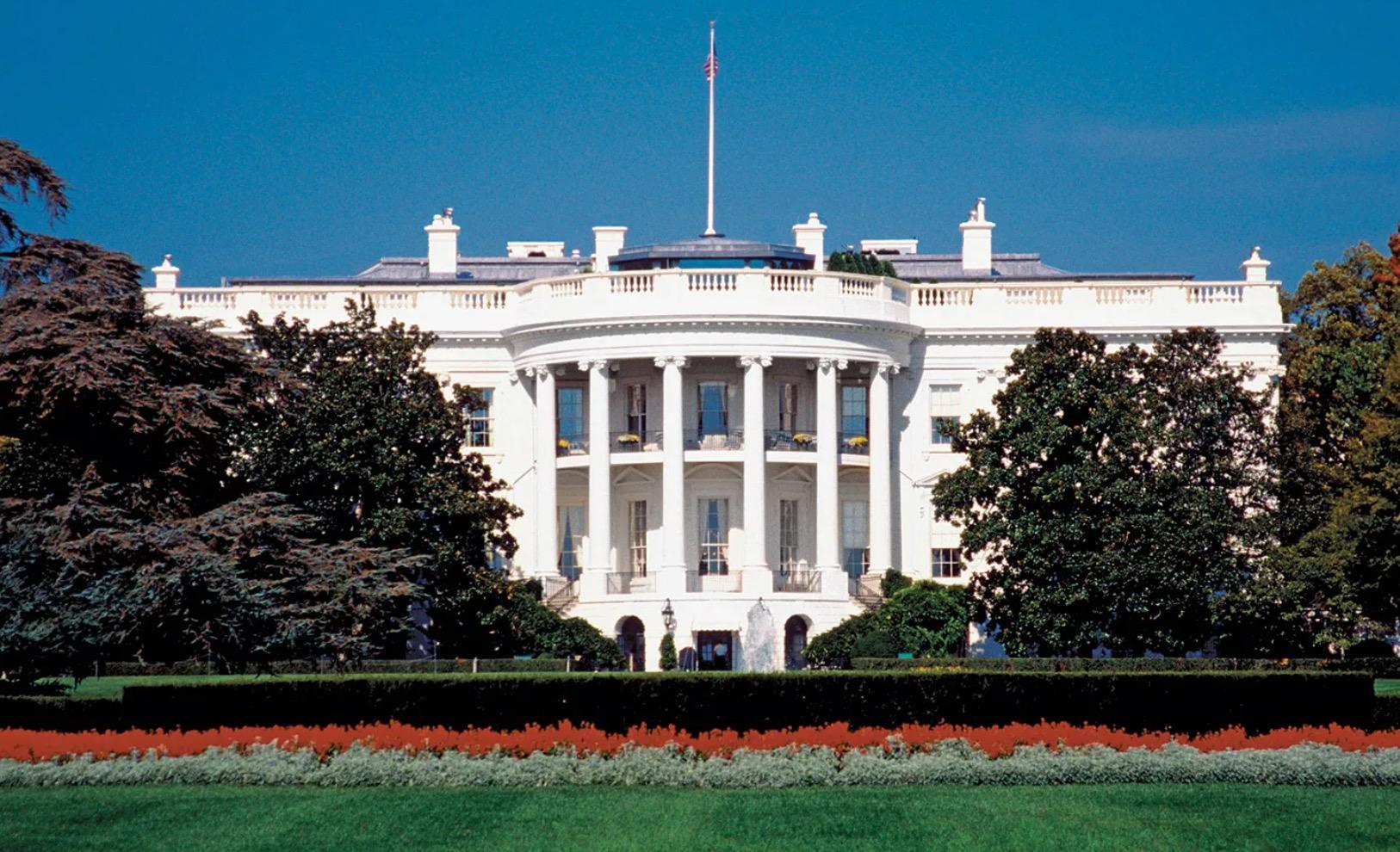
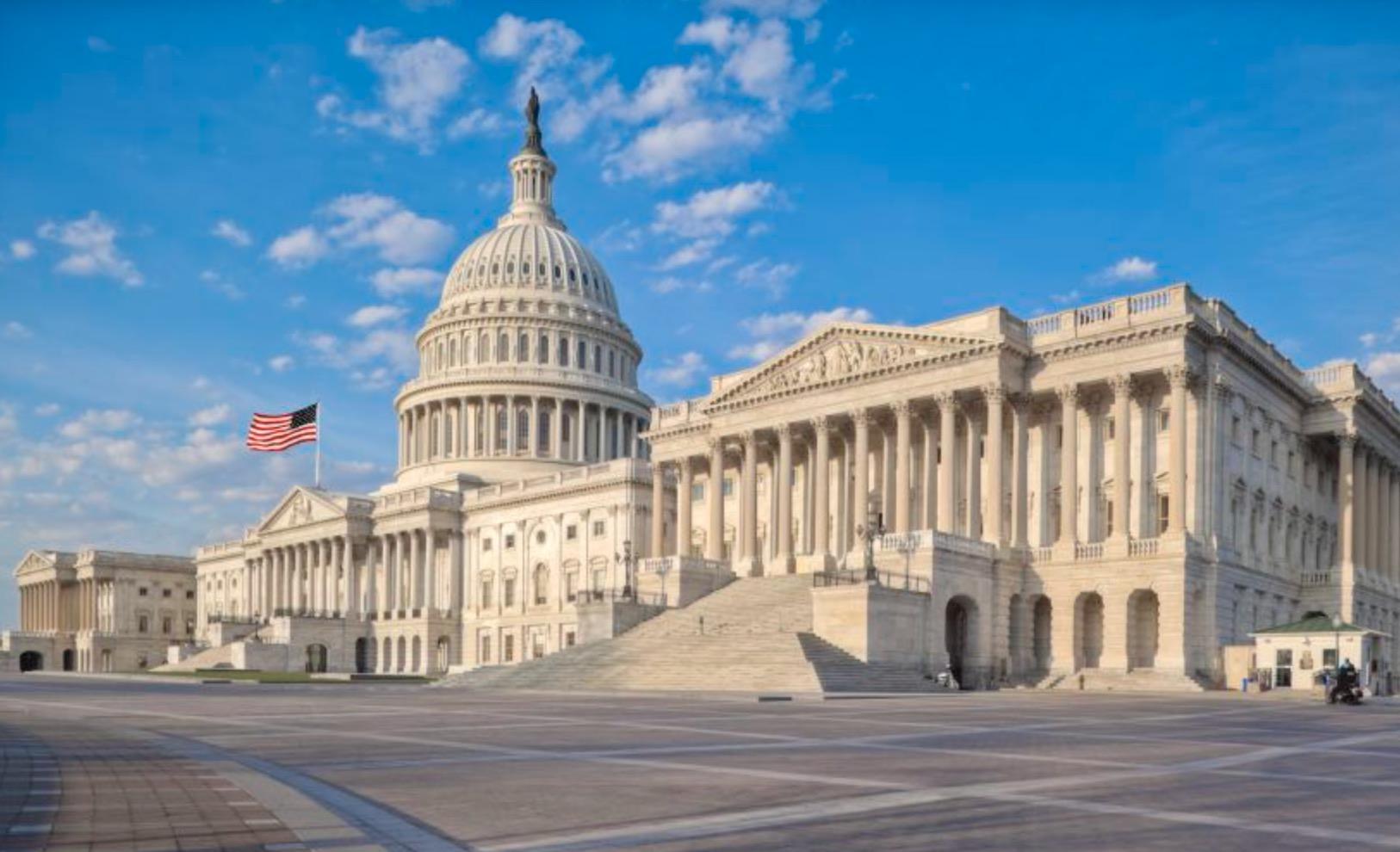

To the Question of What Else Congress Will Do Before the Election… Not much.
• Now that the government funding bills are finally done, the one big thing left on the table is funding for Ukraine, Israel, and Taiwan and the farm bill.

• But there are few other big items that might get done this year.
• And much of the rest of the year will be spent positioning issues to be dealt with in 2025 – 2026… All of which will have big impacts on us.


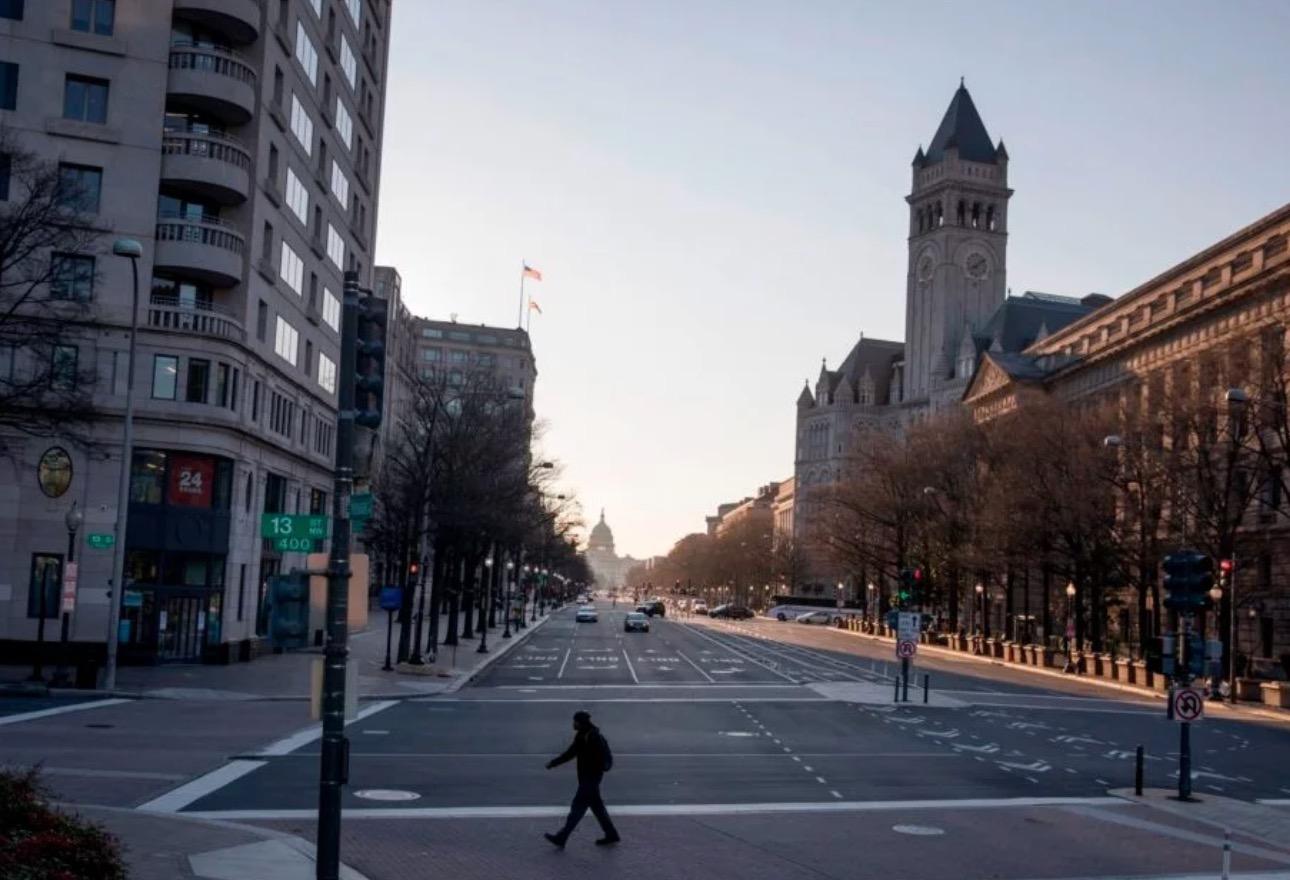
Laying the Groundwork for More US Industrial Policy?
• The Biden Administration has pursued a structural shift in US domestic economic policy – commonly referred to by President Biden as “Bidenomics.” Onshoring/nearshoring/friendshoring are the most common components of this policy.
• Biden and his team believe the US industrial base has been “hollowed out” and needs strong US government support and funding to build it back up.
• There are three pillars to Bidenomics:
Ø The quality of economic growth matters more than the quantity.
Ø Laissez-faire economics (embraced by Republicans and most moderate Democrats) does not work. Why? Because it does not factor in issues like climate change, fragile supply chains, or geopolitical vulnerabilities. Thus, private capital must be directed toward favored sectors via regulation, subsidies, and government intervention.
Ø Trade policy should give priority to American workers – not consumers.
• US foreign policy must not only incorporate this but also champion a range of economic issues: workers rights, climate, tax.



Case Study: The Drive for US Chip Supremacy
• Semiconductor production in the US is the one area where bipartisanship presides in Washington all in the name of “national economic security.”
• The Biden Administration and Congress took up this challenge in 2022 by passing the CHIPS Act which grants close to $100 billion in federal funding on building up the chip industry.
Three examples:
Ø Intel broke ground on a new $20 billion facility in Columbus, Ohio and $20 billion plant in Arizona.
Ø Micron broke ground on a $15 billion expansion in Boise, Idaho and announced a new $100 billion build-out over 20 years in New York – the largest in the world.
• Combine this with the $550 billion funding from the Infrastructure bill also passed in 2022, and it is a potential boom for numerous sectors, particularly for commercial real estate, residential real estate, etc.
• Who else qualifies under CHIPS? The Pharma industry?
• What are the chances of CHIPS 2.0?

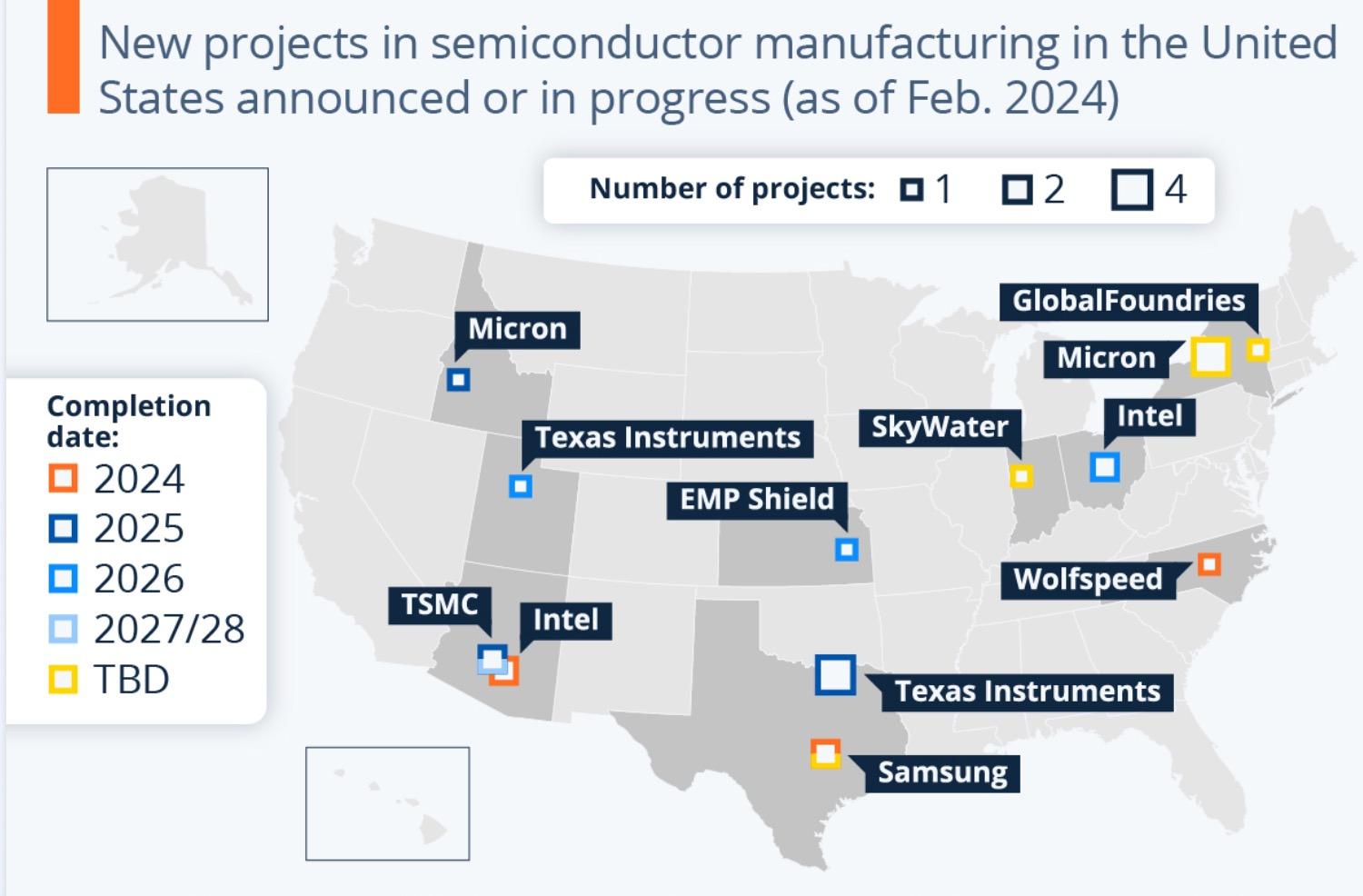
The
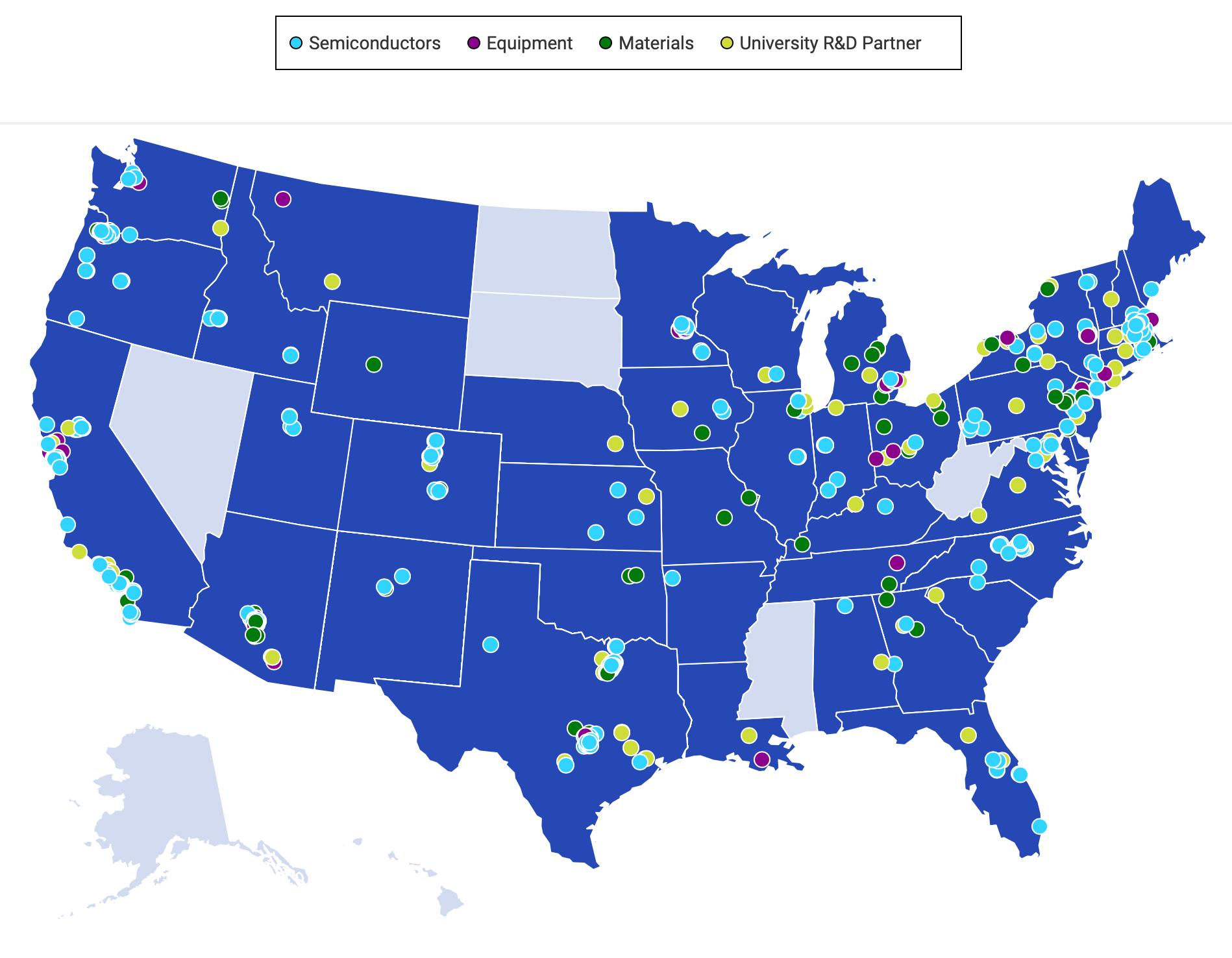
Which States Are The Biggest Beneficiaries of The Inflation Reduction Act?

• More than $479 billion of infrastructure and clean-energy spending is being pumped into the economy due to Bipartisan Infrastructure Law and the Inflation Reduction Act.
• A large number of these investments are going into Red States – which means, even if Biden loses in November, it will make repealing these two laws hard to do.
• “As much as some Republicans have criticized Biden’s economic programs, those [Republican] governors aren’t going to want to see the investments… reversed.” – US Energy Secretary Jennifer Granholm.

Sources: The White House, Axios
What About Wind and Solar Power?
Which States Are the Winners (so far)?

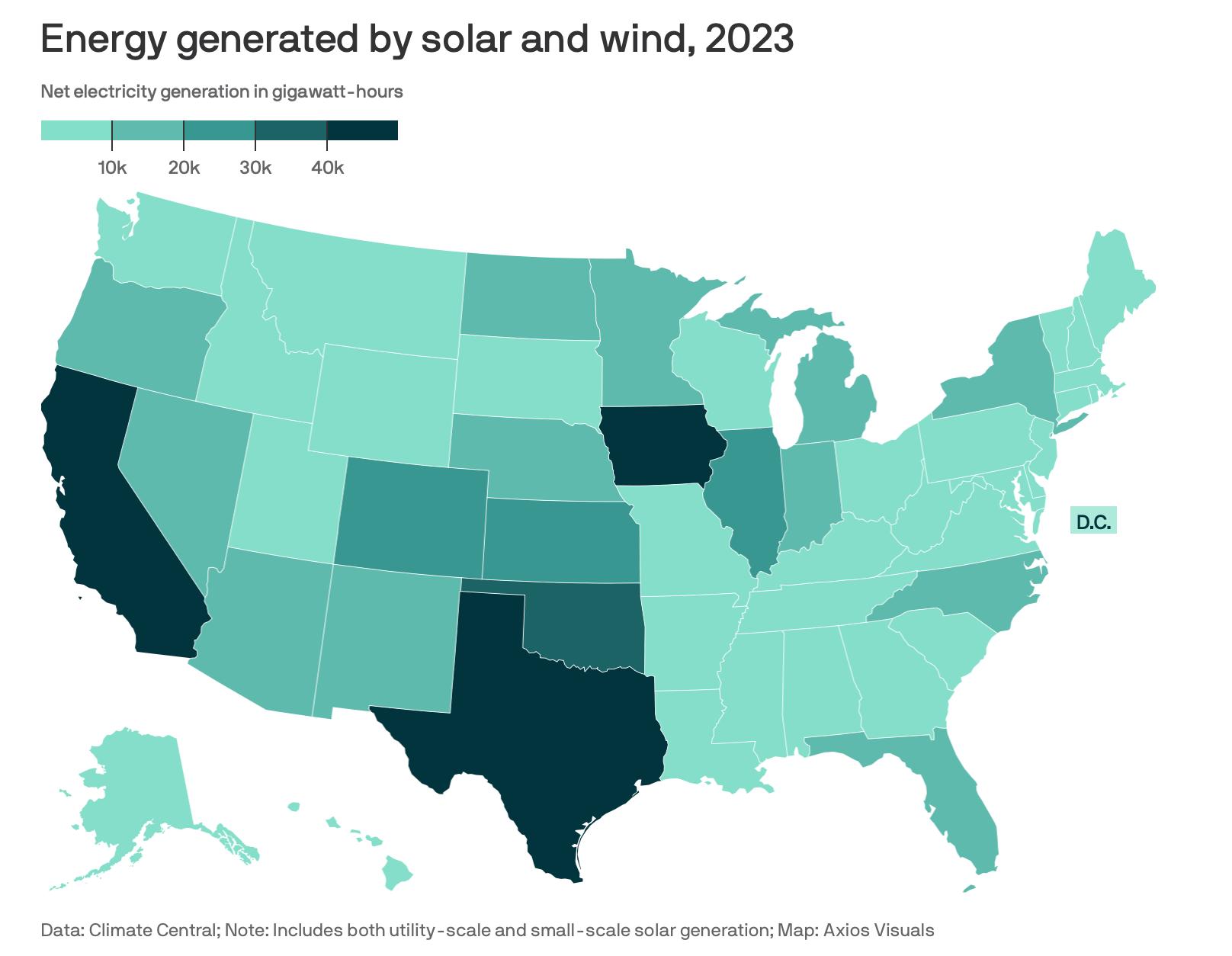
Source: Axios, the White House 17
Ethanol: Does Washington See It As a Solution or Not?
• Ethanol continues to be complicated and a tough issue for President Biden heading into the November elections. The Administration seems to be of two minds. For example, last month the EPA issued a rule to encourage more filling stations to sell E15 gasoline that contains 15 percent ethanol instead of the conventional 10 percent (E10) – which will allow year-round sales (and escape air pollution limits of the past).
• But the EPA is delaying the effective date until April 2025. Why? Worry about price impacts this summer that will resonate on Election Day. The EPA estimates it will cost between 2 – 12 cents per gallon to produce.
• The EPA may issue “emergency waivers” to allow more E15 sales this summer (which they did in 2022 and 2023) – a key member of Congress . But critics argue this is a patchwork approach and want a simpler, clearer solution.

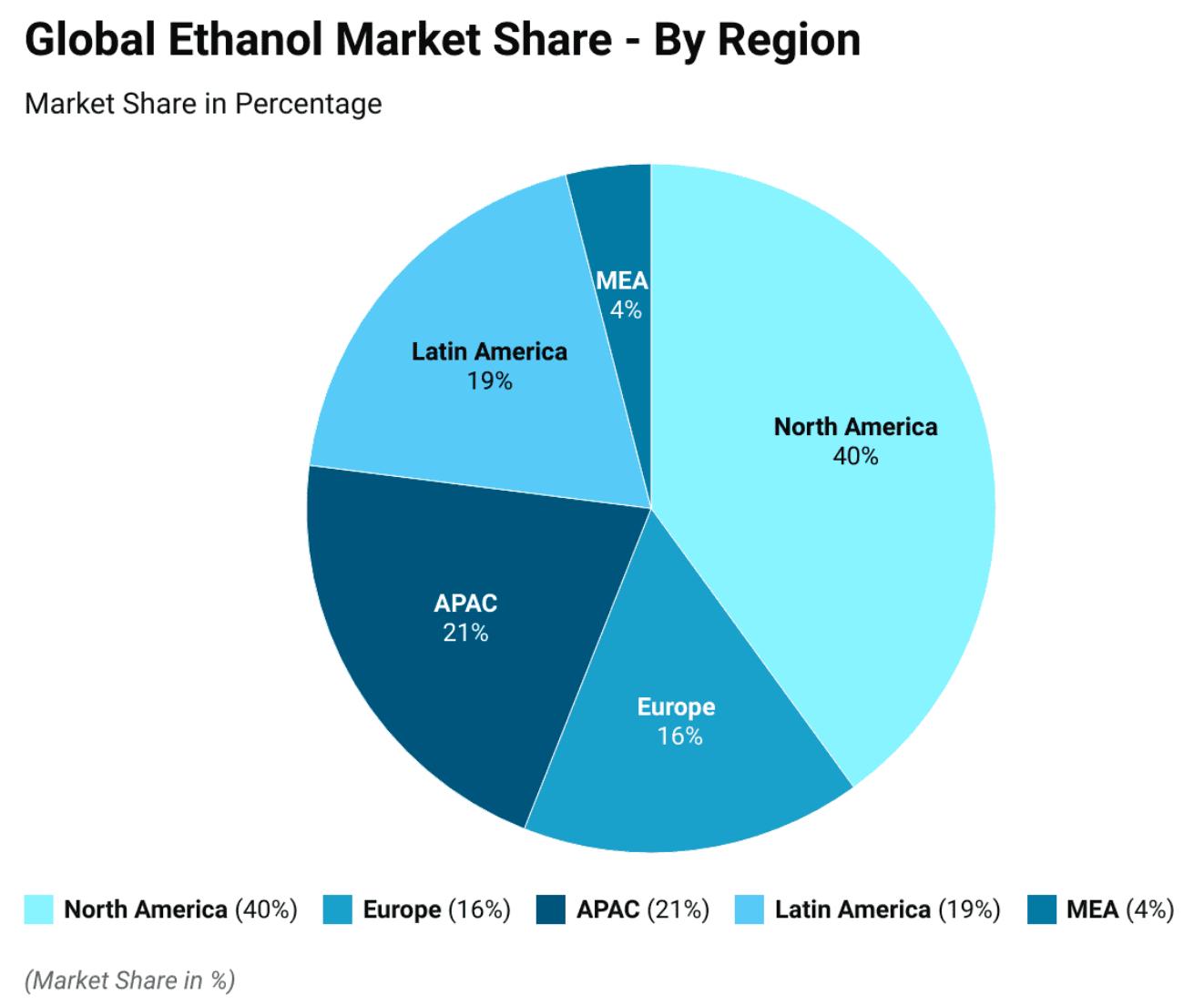
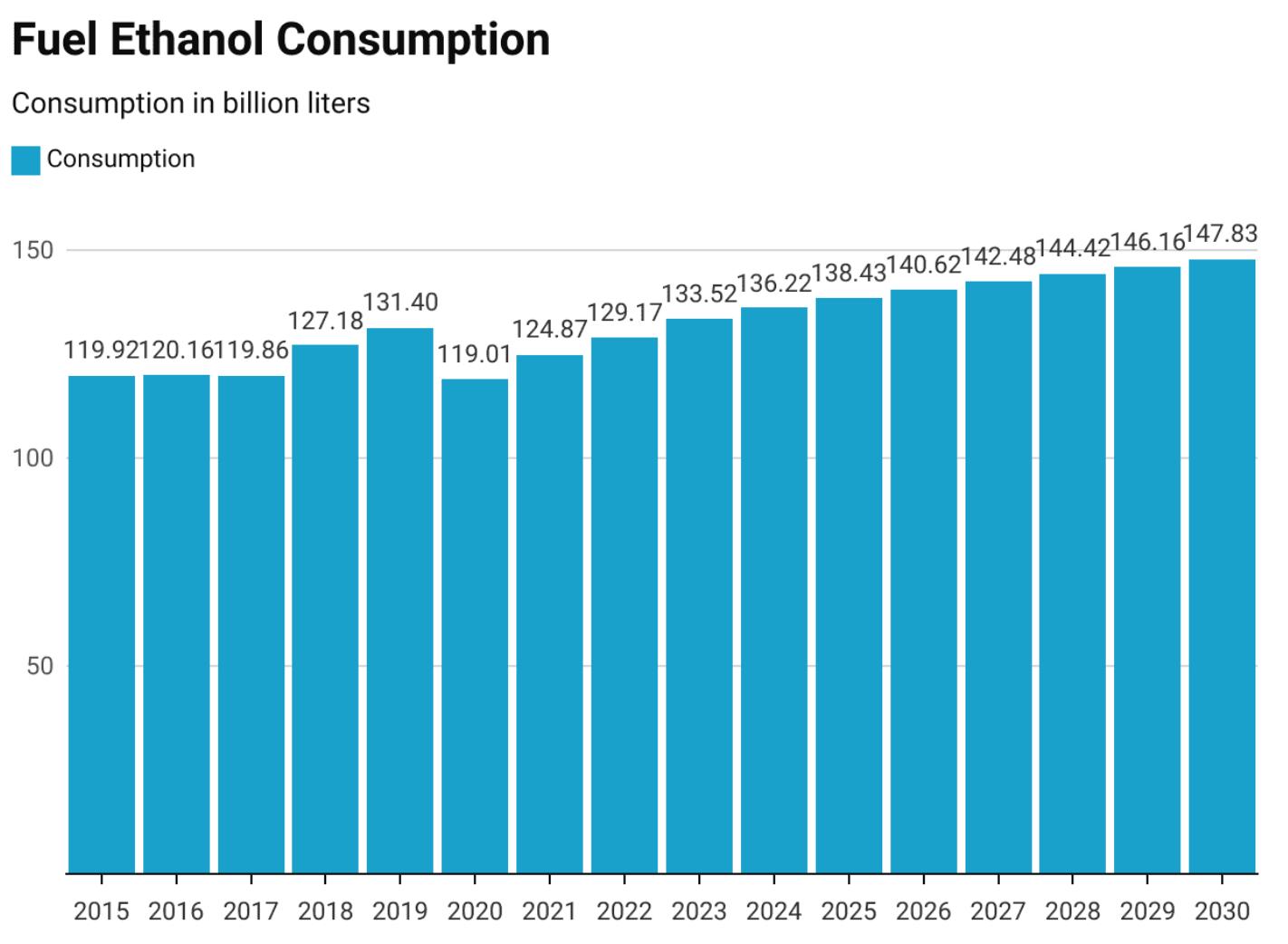
• However, the Biden Administration is about to release a new climate model for its sustainable aviation fuel (SAF) subsidy program. It is likely to be more restrictive than what the corn-based ethanol industry expected or wants. Specifically, ethanol probably will not qualify as a feedstock unless the corn involved is sourced from farmers using one of only three sustainable agricultural techniques. Sources:
Oil Merger Mania! Going Big in the Permian Basin or Going Home?

• We have witnessed a significant uptick in large oil/gas mergers in recent months, all involving large patches in the Permian Basin in Texas and New Mexico:
Ø October 11, 2023: Exxon announced a $60 billion deal to buy Pioneer Natural Resources.
Ø October 23, 2023: Chevron announced a $53 billion deal to buy Hess.
Ø December 11, 2023: Occidental announced a $12 billion deal to acquire CrownRock.
Ø February 12, 2023: Diamondback Energy announced a $26 billion deal to buy Endeavor Energy Resources.
• But these big deals beg two big questions:
o What is the longer-term outlook of the oil and gas industry?
o Will the Biden Administration - which has aggressively moved via the EPA to require more than half of all new cars and trucks sold in 2030 to be zero-emission - allow these announced mergers to proceed? Or with the Federal Trade Commission and/or the Department of Justice’s Antitrust Division move to block them? Watch the Exxon/Pioneer and Chevron/Hess deals closely as deadlines are approaching for the federal regulators.
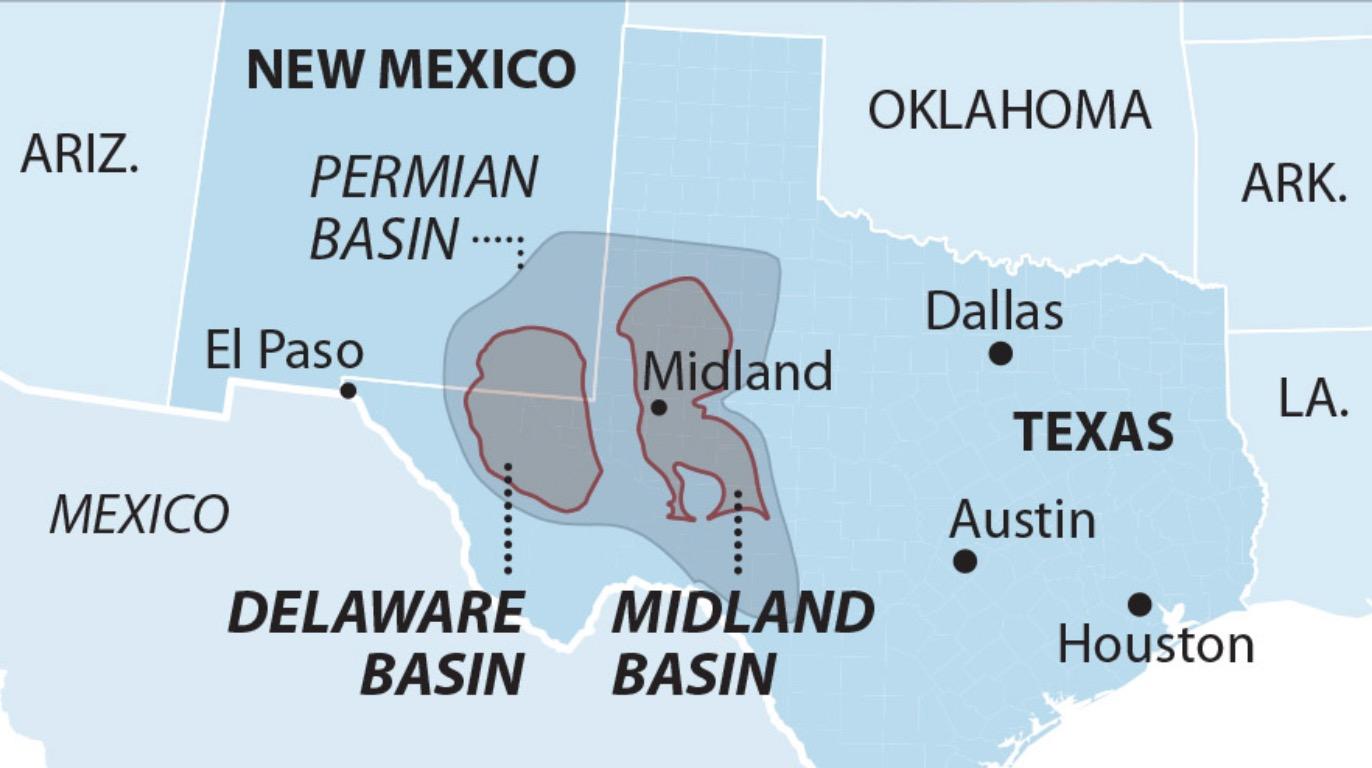

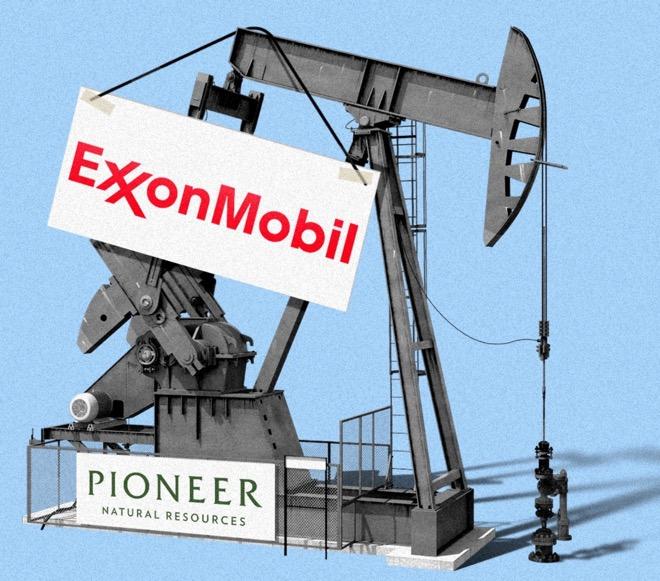


Sources: Wall Street Journal, Global Economics, AP 19
What is Holding Back the Growth of EV’s? The US Electrical Grid Just Cannot
Handle It, Consumers Don’t Want Them
• In 2022, the US Congress approved (via the Inflation Reduction Act) hundreds of billions of subsidies for solar panels, wind turbines, electric vehicles, and other nonpolluting technologies.
• But, quite simply, the vast majority of the US national power grid system – made up of 3,200 different utilities amid a complex patchwork of regional planners and state and local regulators –just cannot handle the demand for these technologies and need wholescale retrofitting.
• This all comes as we see a massive surge in building data centers, crypto mining facilities, and new Artificial Intelligence (AI) systems – all voracious consumers of electricity.
• Meanwhile, auto manufacturers are starting to pull back from EV investments. Ford’s EV production lost $4.7 billion in 2023, GM is postponing adding a second factory (after losing $1.5 billion in 2023), Apple canceled their decade-long effort (costing more than $10 billion) to build an electric car.

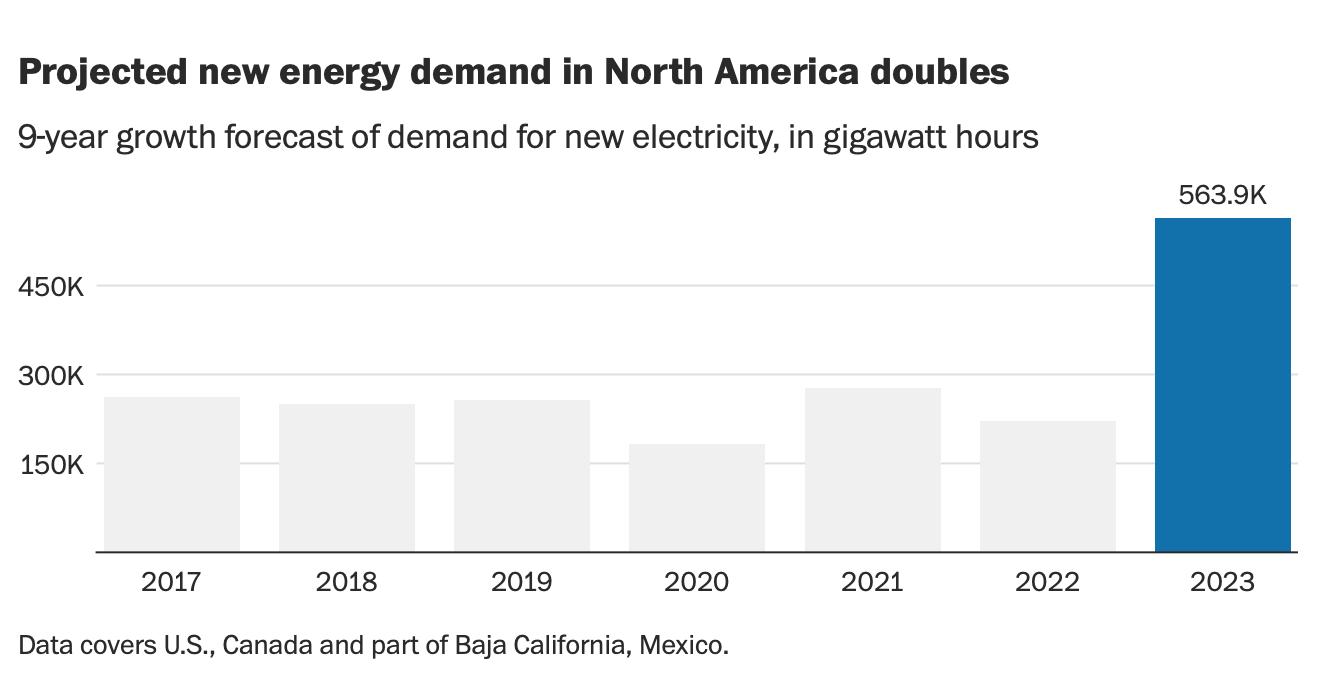
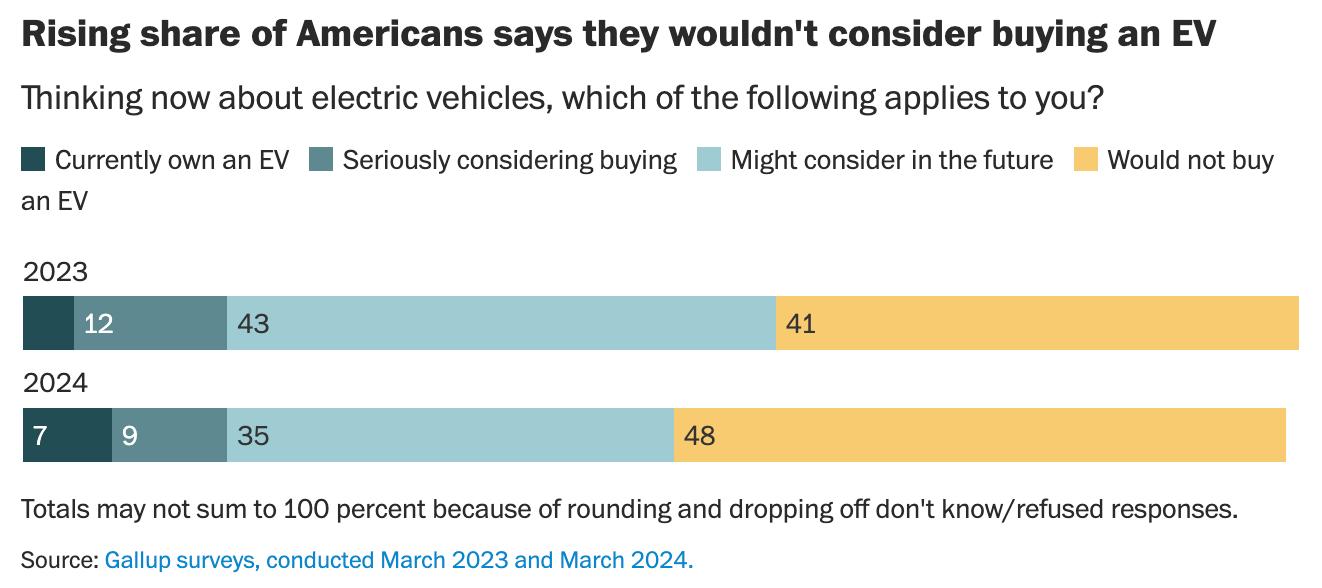
So, Who Are Likely To Buy EVs? Democrats. And Who Are Likely Not to Buy EVs? Republicans.
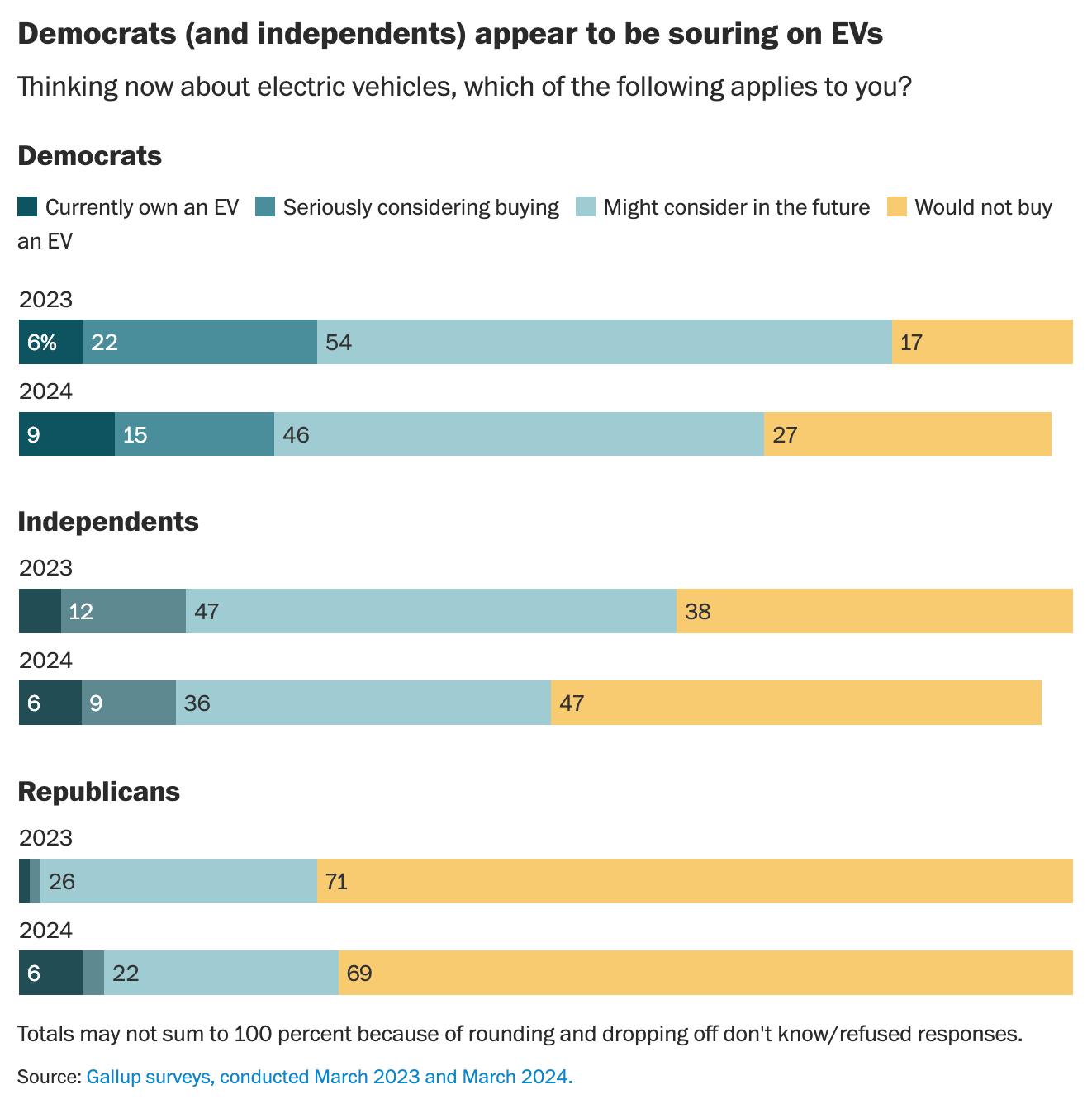

Source: Gallup 21
Congress Has Some Tough Questions About EVs, the SPR and Other Issue
As the future of EVs is debated and all that the IRA and Infrastructure bill is directed to spend, Congress has some questions and is going to hold tough hearings this year:
• Two years after President Biden vowed to spend $7.5 billion (via the Bipartisan Infrastructure Law) to build 500,000 charging stations by 2030, a grand total of seven stations offering 38 charging spots in four states have been built (so far, only in New York, Hawaii, Ohio, Pennsylvania). Why and where has the money been spent?
• The Strategic Petroleum Reserve (SPR): Where are we in refilling it and when will it get done? President Biden tapped the SPR in 2022 in an effort to lower gas prices. But it has not been refilled yet. To do so would require the Department of Energy to buy one million barrels a day. DoE is buying one million a week . Why? One million a day would seriously spike the price of oil. But isn’t there any other way?

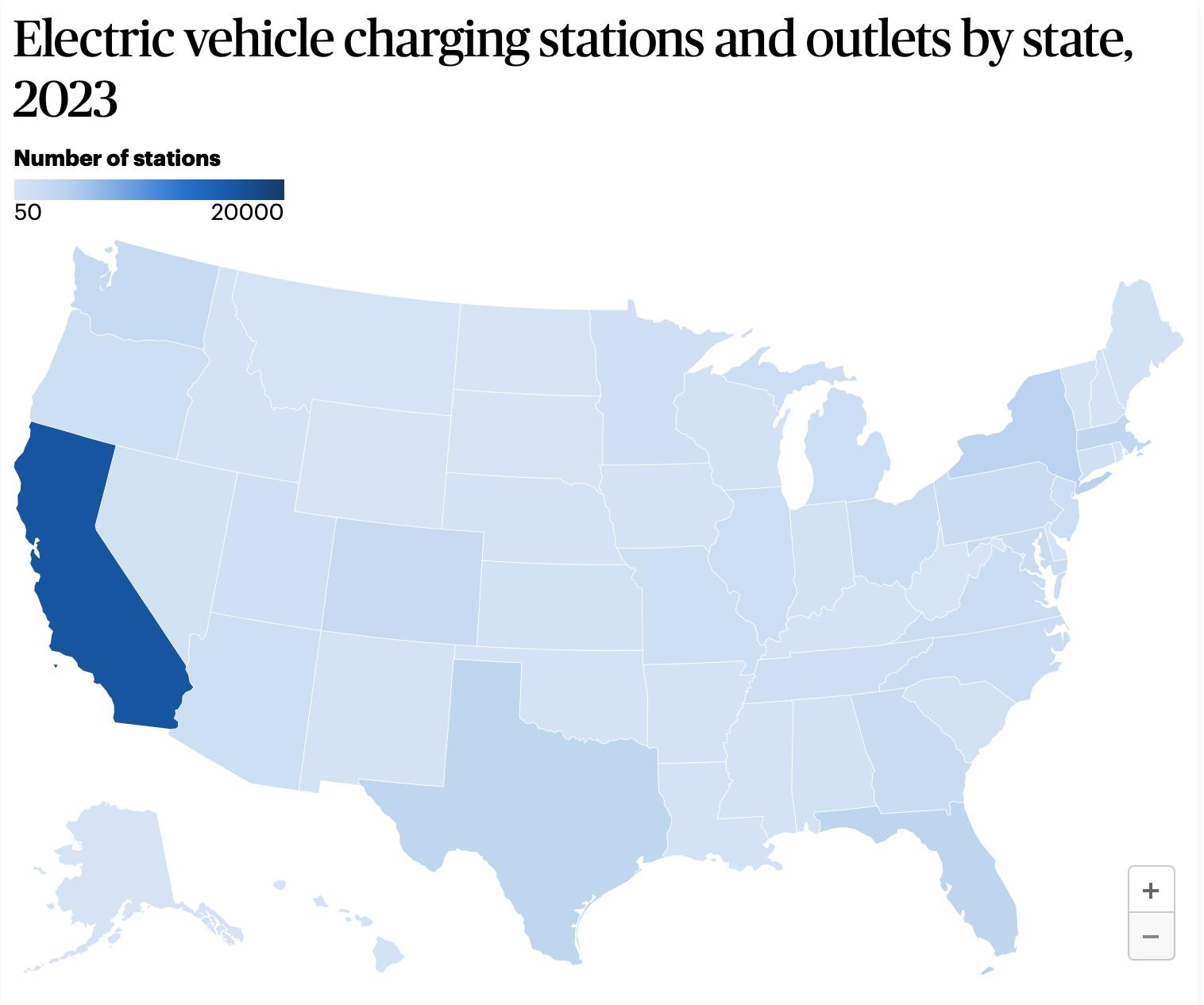
• The EPA’s new Emissions Standards: How Will the US possibly meet the the Biden Administration’s 2032 EV requirements? Sources:
But Explosive Electrical Demand Is Not Just A US Issue – It is A Global Issue

Projected Change in Electricity Demand by Region 2022 - 2026
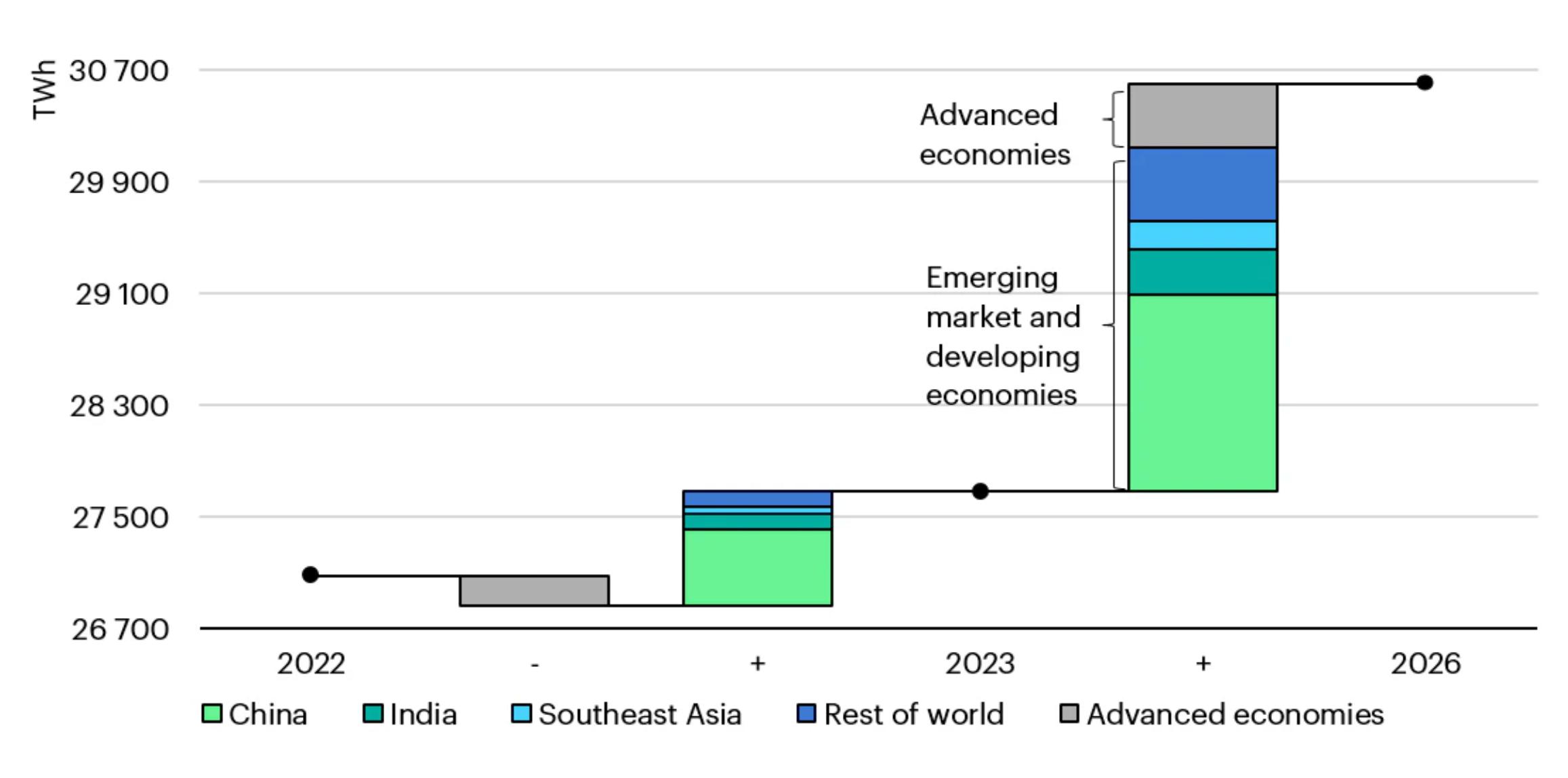
Source: International Energy Administration 23
But Will This Funding Help Biden in November? So Far, It Does Appear So

Small Businesses Optimism Index is now at the lowest level since December 2021.
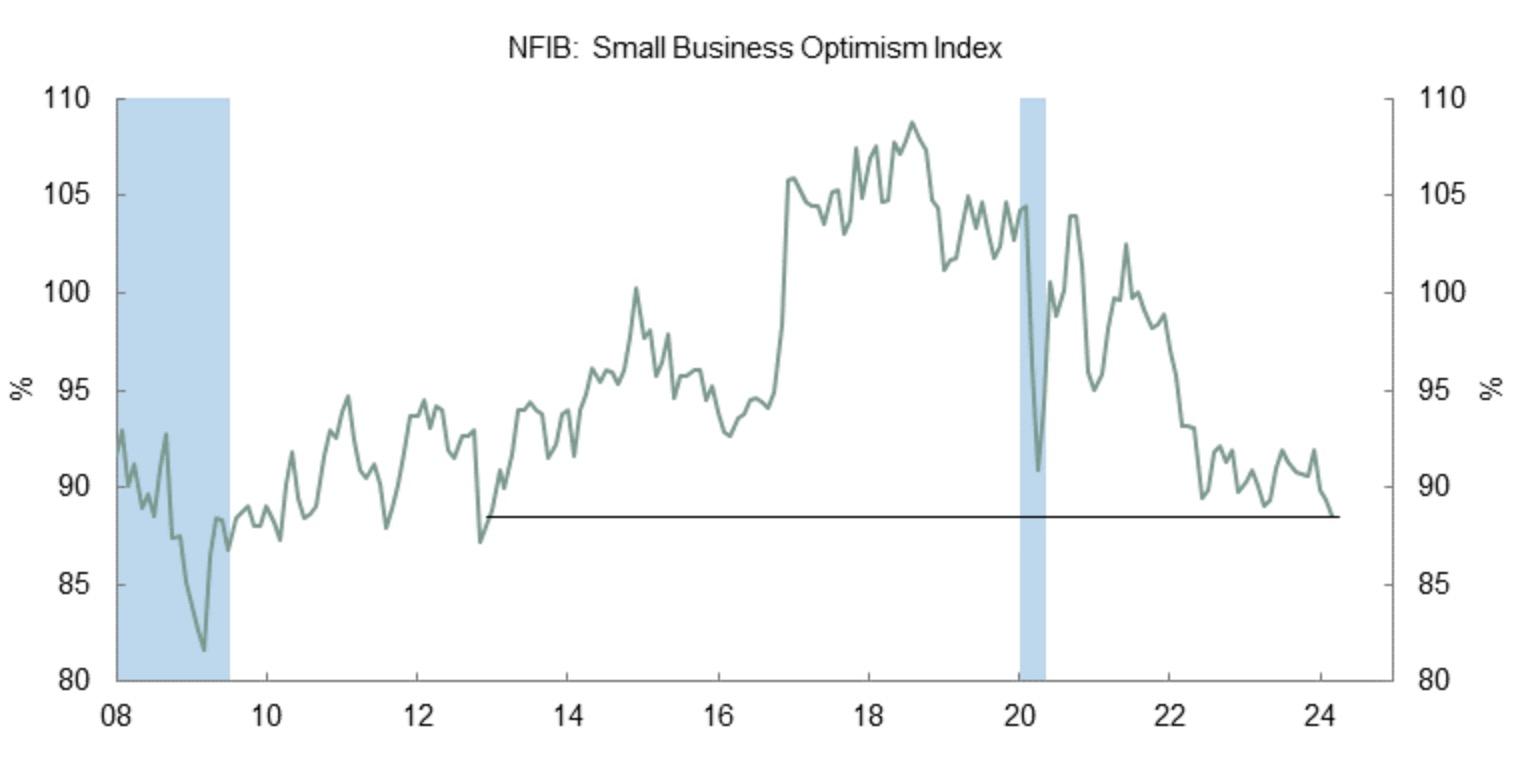
Source: National Federation of Independent Business, SMBC Nikko Economics 24
The Staggering Federal Debt: It is On Track to Grow from 100% to 200% of GDP


Source: Apollo Capital Management Chief Economist Torsten Slok, CBO, Haver Analytics 25
Tax Reform Will Not Happen This Year But Will in 2025
– Until then, it is
“The War of the White Papers” in Washington

• We see little to no chance of any major tax legislation at the federal level in 2024 (including a legislative effort that is ongoing in the Senate to pass a small corporate tax package of “tax extenders”).
• However, many of Trump 2017 tax provisions “sunset” at the end of 2025. So, what we are seeing now is tax advocacy groups, think tanks, political groups all laying the predicate for tax reform after the 2024 elections via a “War of the White Papers” arguing for and against what should be done and how the federal government (and you) can pay for it all.
The Supreme Court and US Regulators: Time to Regulate the Regulators?

• One thing you can always count on in an election year in Washington: As Congress increasingly grinds to a halt in passing legislation, regulators ramp up their regulatory work stream.
• This is one reason so many proposals from the FERC, EPA, SEC, CFTC, Federal Reserve, FHA, etc. have not been completed yet – lots of “study” and waiting until Congress hits election year gridlock.
• The Supreme Court recently heard a very big case challenging the role of all federal regulators and their reliance/use of in-house administrative courts. Specifically, this case goes to the constitutionally of the CFPB’s funding structure as well as the SEC’s in-house enforcement regime.
• But what does this mean for regulated industries and you? In short, if the Court rules against the regulators in this case, declaring them unconstitutional, then it will be very hard not to say a lot of what the agencies have done in years past is illegal. And this would be applicable to ALL Federal regulatory agencies.
• In the interim: Expect the regulators to race to push out as much as they can before the ruling is handed down later this spring.


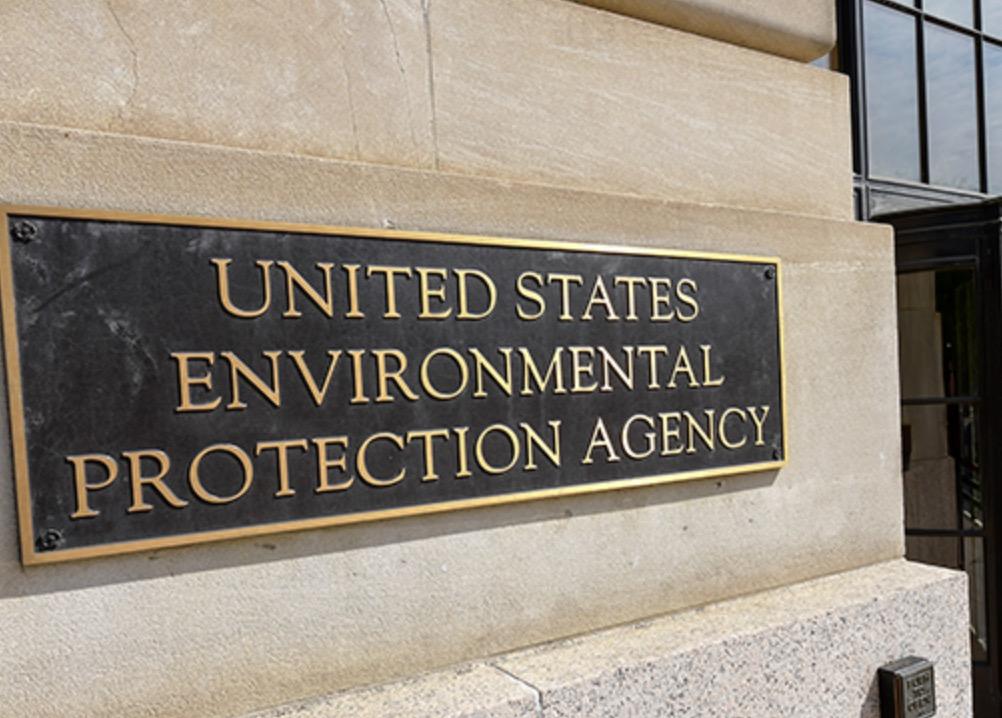
Are We Having A Crisis of Fulsome Economic Data?

We have seen a significant increase among voters calling into question the validity of economic data coming out of Washington. And they are not wrong. Participation in government economic surveys are in many cases massively down. This raises significant questions: How much does this skew numbers overall? What if the people who do not respond to the surveys are much different from those who do respond? How do you get businesses to respond to make survey results more robust and ensure credibility is restored to government data releases?

Source: Labor Department; Wall Street Journal 28

US Elections, Policy, & Markets


What to Watch in 2023-2024

The 2024 Choice: Biden or Trump or a Third -Party or Independent Candidates.




Could a 3rd Party Candidate Swing the Presidential Election?
• A third-party candidate has never come close to winning even one elector in previous elections.
• With polls showing a tight race between President Biden and former President Trump, third-party candidates are poised once again to impact the outcome of the election.
• Washington, D.C.-based nonprofit No Labels is currently gathering signatures across several states to qualify as an independent party in the 2024 presidential election. So far, No Labels has gained access to the ballot in 13 states, including swing states Arizona, Nevada, and North Carolina.
• Jill Stein has been confirmed for the ballot in 27 states and the District of Columbia and is awaiting confirmation in more than a half-dozen others. Notably, the Green Party has obtained ballot access in three swing states: North Carolina, Michigan, and Wisconsin. The party also has pending litigation in Georgia.


What Happens if There is a Sudden Vacancy in the Presidential Election?

What would happen if a major-party candidate died or abruptly dropped out of the presidential race before election day?
The age and health of presidential candidates has become a hot topic for voters, as many Americans express concern about the advanced age of both the Republican and Democratic frontrunner for president. If either Biden or Trump drops out of the race at any point this year, it would have massive, unprecedented implications for the affected party.
Ø From now until March, if Trump were to withdraw, the Republican party would have well-funded, formidable alternatives. Conversely, if Biden were to withdraw, Democrats would scramble to appoint a candidate with broad support.
Ø If a candidate were to drop out after primary season, it would be nearly mathematically impossible for an alternate candidate to win the nomination, as by mid-March both parties will have allocated a majority of their delegates. In this scenario, anyone running would seek out uncommitted delegates to pledge their support. The last time a major party needed more than one ballot to nominate a presidential candidate was in 1952.
Ø Notably, the presidential and vice-presidential ballots are separate at the Democratic convention, so Biden’s delegates would not automatically transfer to VP Harris.
What Does the Electoral College Projections Look Like Today: The 77
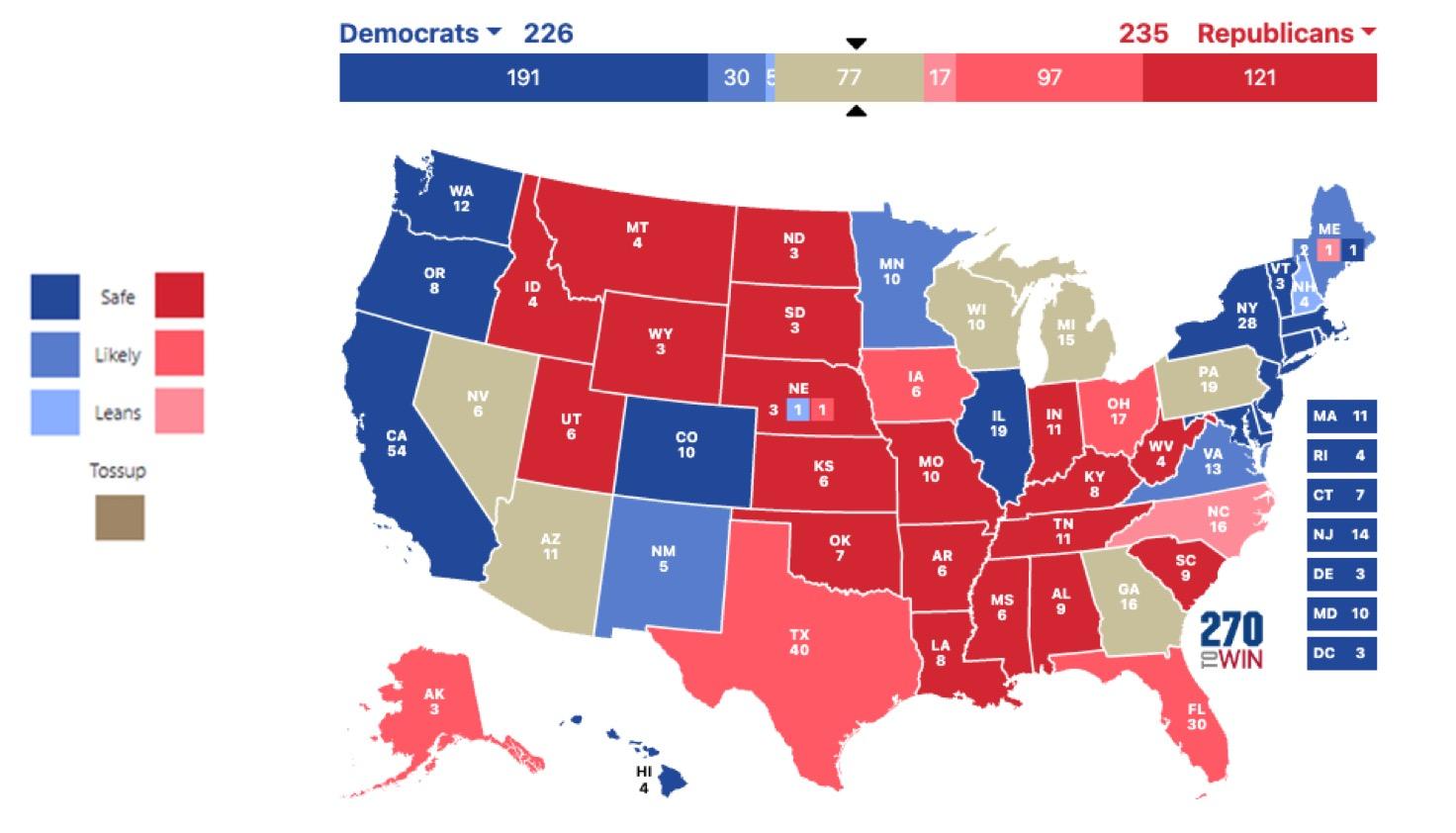

The
2024
Presidential Elections are Likely to Come Down to Who Wins These States

Arizona Biden Trump Georgia Biden Trump
Michigan Biden Clinton
Nevada Biden Clinton
Pennsylvania Biden Trump
Wisconsin Biden Trump
Source: New York Times; CNN
Who is Winning These Battleground States Now?
Battleground State Polling (as of 4.1.24)
Arizona Trump +5.2

Georgia Trump +5.2
Michigan Trump +3.5
Nevada Trump +3.0
Pennsylvania Trump +0.2
Wisconsin Trump +0.8
Source: Realclearpolling as of April 1, 2024 35
The 2024 US Senate Outlook: Can Democrats Hold Control?
Democrats must defend 23 of the 33 seats up in 2024, many in states that have become more Republican. Likely Republicans win control of the Senate.
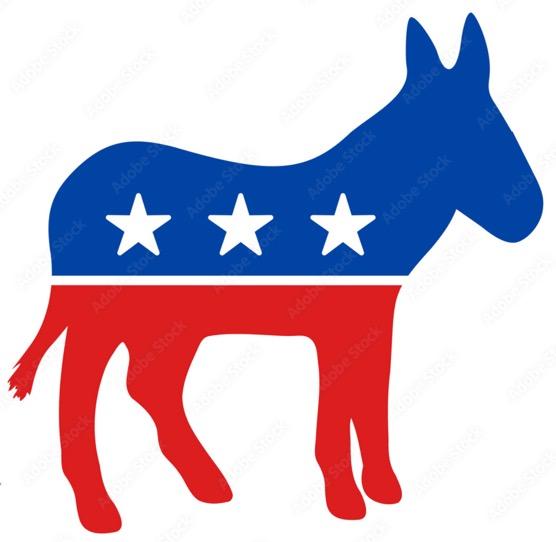
Democrats at Risk:
Republicans at Risk:

1. Sherrod Brown (D-OH)*
2. Jon Tester (D-MT)*
3. Joe Manchin (D-WV)*
4. Jackie Rosen (D-NV)
5. Bob Casey (D-PA)
6. Tammy Baldwin (D-WI)
1. Open Seat (IN)
2. Josh Hawley (R-MS)
3.
Independents at Risk:
Kyrsten Sinema (I-AZ) is not running again.
* = Trump won their states – Ohio, Montana, West Virginia – in 2016 and 2020

The US House of Representatives: Can Either Party
Break Out with a Sizeable Majority?

Currently, there is a two-seat GOP majority in the House – with a loud GOP dissent faction – making the current majority extremely fragile.
• Republicans have seen five Republicans quitting the House in the last four months. Republicans are further weakened by the Caucus infighting which resulted in the ejection of Kevin McCarthy (R-CA) as Speaker of the House and election of Michael Johnson (R-LA) as the new Speaker.
• But can Johnson survive? After getting the Appropriations bills passed last month, a new House Republican motion was put forward to force Johnson out.
• Redistricting in New York, North Carolina, Georgia, and Alabama is highly likely to result in five to eight Democratic pick-ups.

Source: Washington Post
The US Election 2024: Who
is Up for Election?
• Election Day: November 5, 2024
- Who is up for election?
Ø The President and Vice President
Ø 435 Members of the House of Representatives
Ø 33 Members of the US Senate
Ø 11 Governors and Lieutenant Governors
Ø 10 State Attorney Generals
Ø 86 State legislatures in 44 states plus 8 legislative chambers in US Territories
Ø 22 major city mayors
Ø Hundreds of state and local judges
• January 25, 2025 – The new President and Vice President and all members of the new Congress are sworn into office.
States with Senate seats up for election
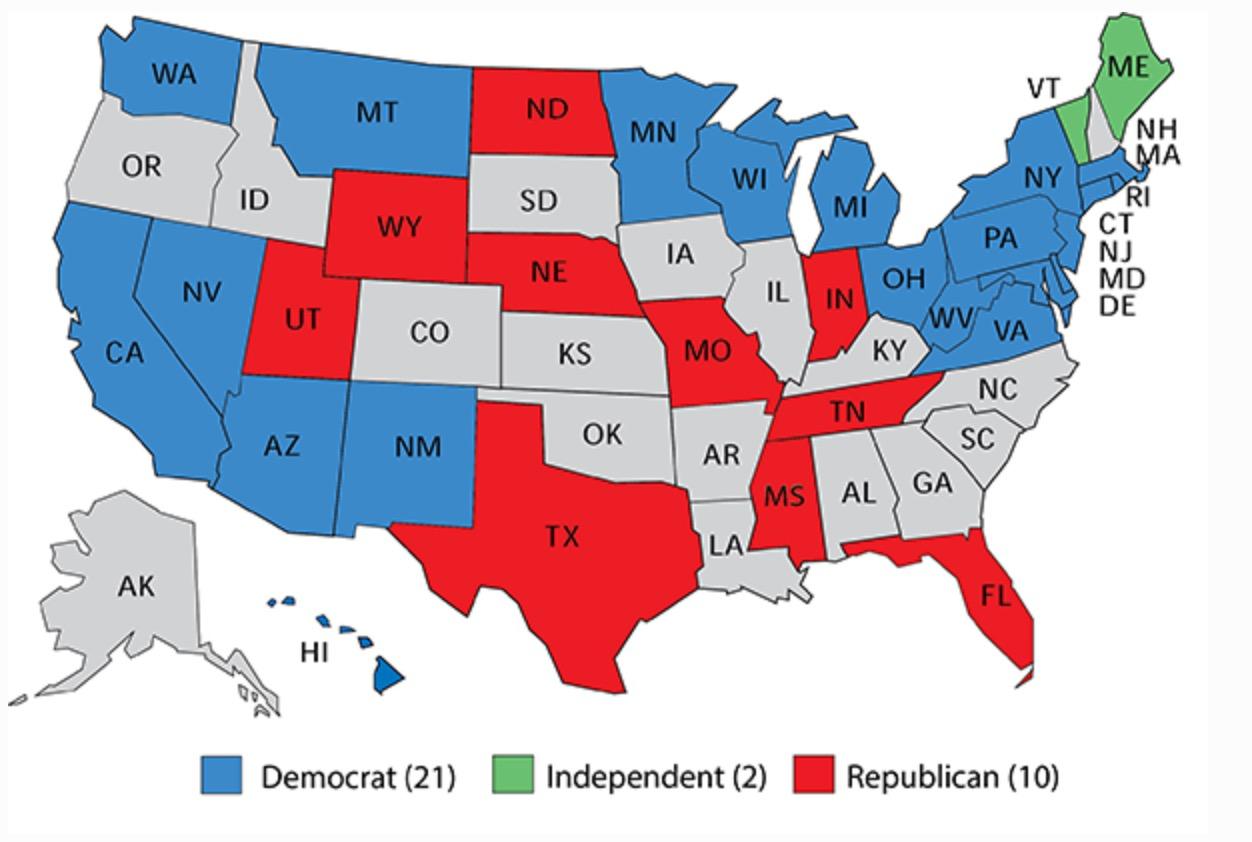
States with Governor seats up for election
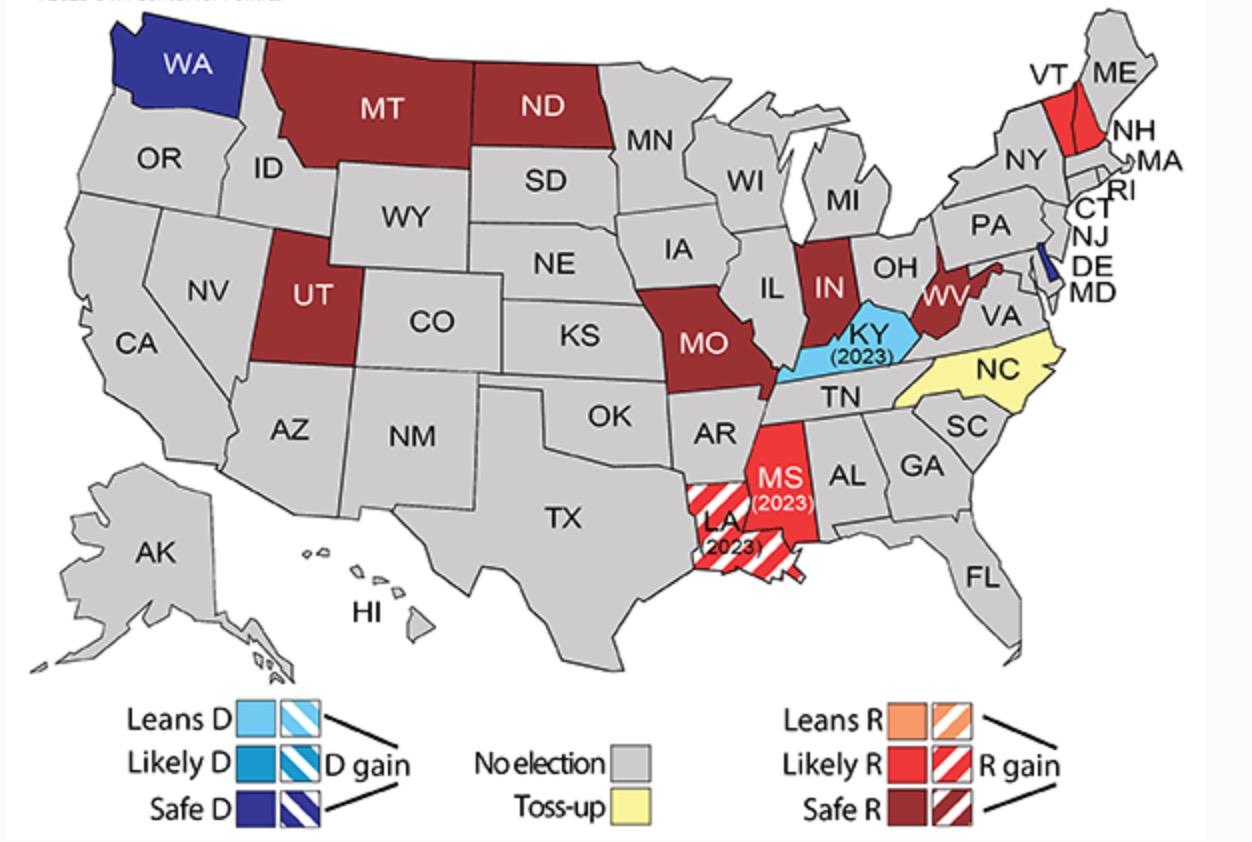
Source: University of Virginia Miller Center for Politics

If You Think You Are Seeing A Lot More Political Ads this Election Cycle Than Ever Before, You Wouldn’t Be Wrong…
• Political spending on advertisement on this election cycle is expected to surpass $10 billion – a 13% increase over 2020.
• How much was spent in 2016? $2.6 billion.
• Breaking it down, estimates are:
Ø Presidential campaigns will spend in excess of $2.7 billion (individual and outside groups combined)
Ø Senate campaigns will spend in excess of $2.1 billion
Ø House campaigns will spend in excess of $1.7 billion
Ø Gubernatorial campaigns will spend in excess of $361 million
Ø And more than $3.3 billion will be spent on all the other elections (various statewide offices, state house and senate races, city councils, etc.)
• Republican presidential candidates have already spent more than $100 million so far.

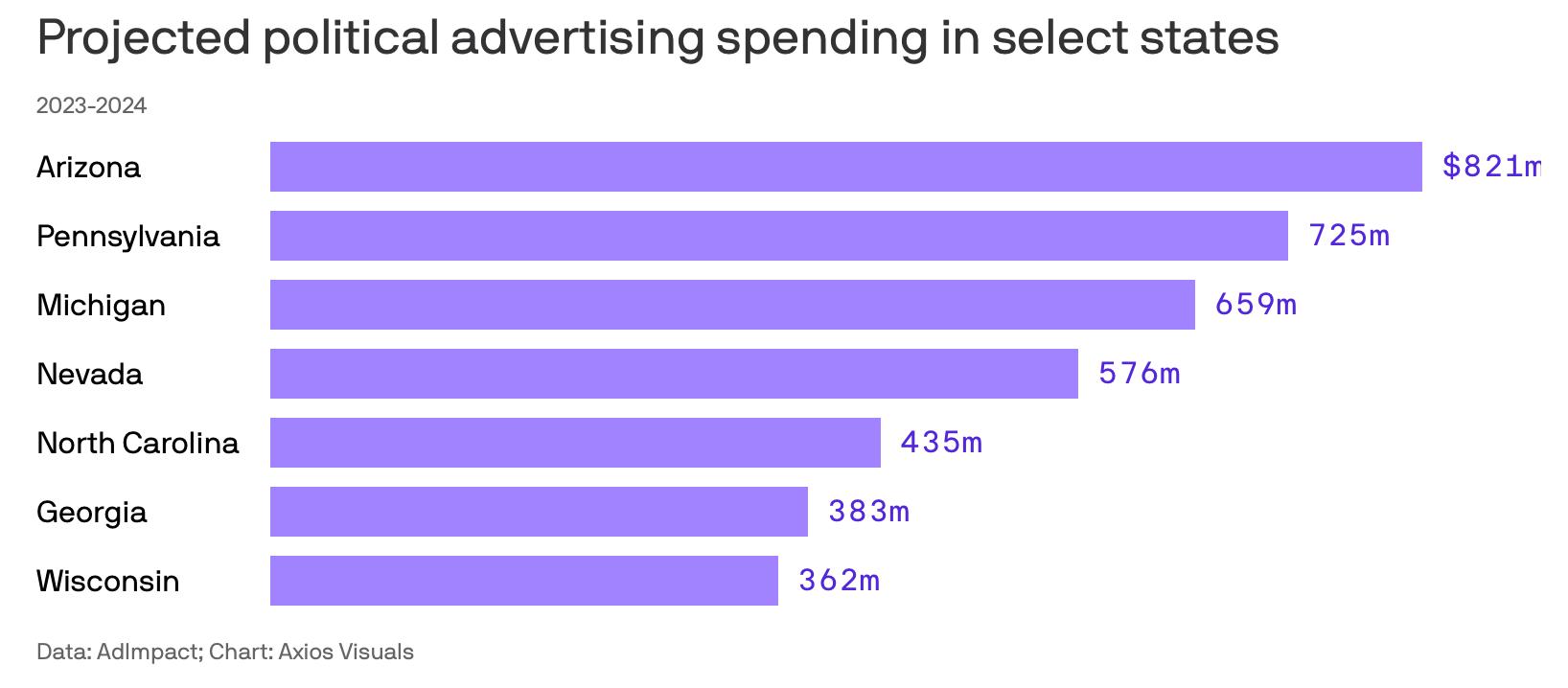
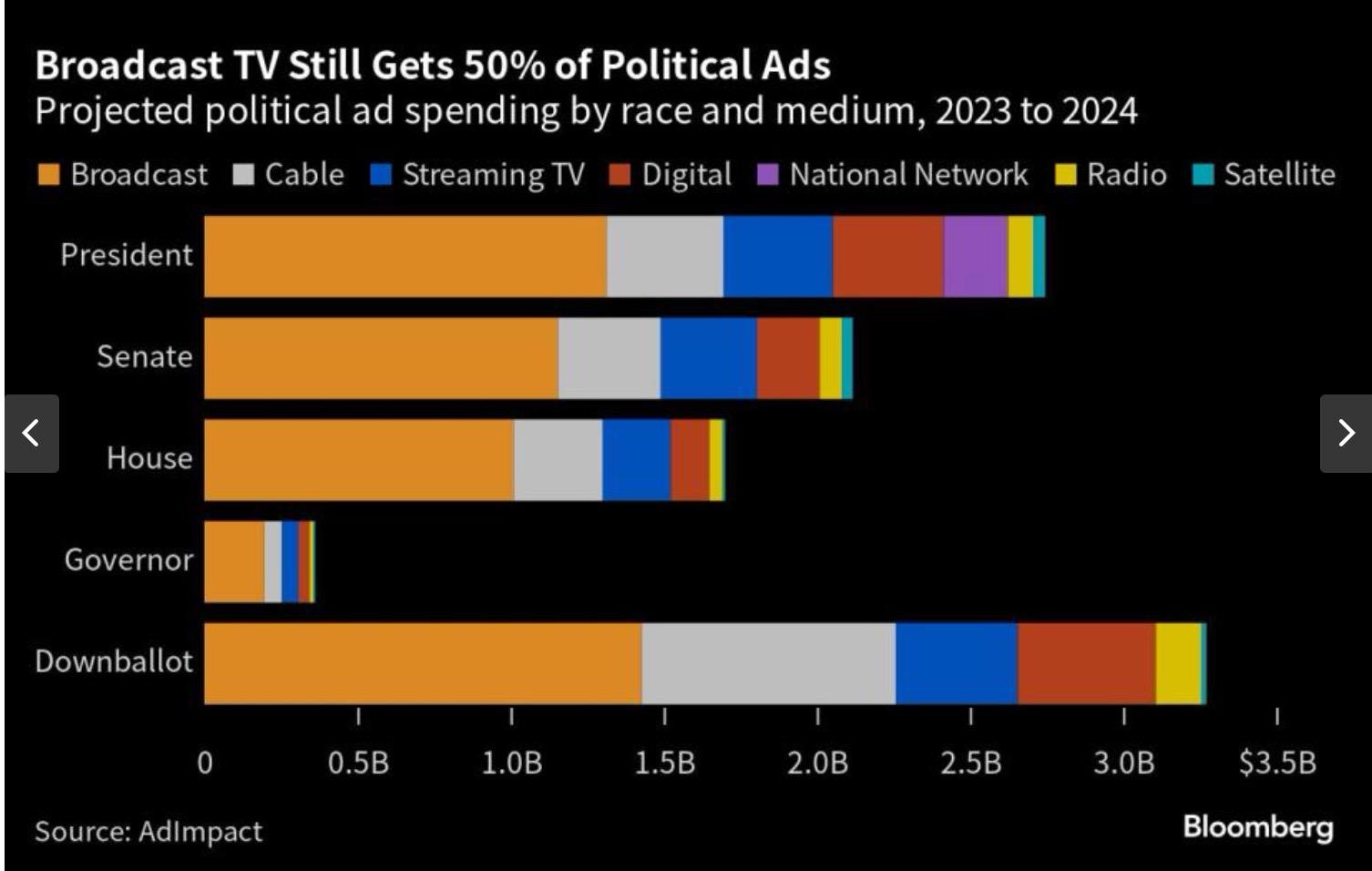
Sources: AdImpact, NBC News; Axios, Bloomberg






So, Thank you!
From a grateful father, please know these two things about what you do and who you are
1. You are often the first line of defense medically.
2. You are often the single source of joy and achievement for for families like mine.

Fulcrum Macro Advisors LLC Leadership

Frank Kelly
Frank is the Founder and Managing Partner of Fulcrum Macro Advisors LLC. He has worked as a senior executive on Wall Street for over 30 years, most recently at Deutsch Bank. Prior to this, he held senior positions at Charles Schwab & Co., and Merrill Lynch where he was Chief of Staff and Global Head of Marketing.
At Deutsche Bank, Frank served as Global Coordinator for Government and Public Affairs. He was also the Bank’s first Chief Political Strategist, advising clients on geopolitical and domestic policy issues.
Prior to joining the financial services sector, Frank was Chief Spokesman and Senior Policy Advisor to the Chairman of the US Securities and Exchange Commission. Previous to this, Frank served at the US Department of Justice in the Office of Policy Development where he focused on international and national security issues. He began his career as a Writer for President Ronald Reagan, going on to serve as the Deputy Associate Director of the Office of Political Affairs. He remained at the White House to serve as a Writer for President G. H. Bush.
He is also a Senior Advisor to The Scowcroft Group, a Washington DC global business advisory firm with an emphasis on emerging markets. He is also a Senior Associate in the Americas Program at the Center for Strategic and International Studies (CSIS). Frank additionally is a Lecturer at The Catholic University of America’s Busch School of Business where he teaches on Business Intelligence.
Francis j. Kelly
Direct: +1-202-744-5706
Email: fkelly@fulcrummacro.com
www.fulcrummacro.com
Frank is a member of the Council on Foreign Relations, the International Institute for Strategic Studies, the American Council on Germany and American Institute for Contemporary German Studies. He also serves on the Board of Directors of Codespa America and as Vice Chair of the Board of Directors of the Jerome Lejeune Foundation of America.
He resides outside Washington DC in Great Falls, Virginia with his wife, Maura, on their working farm, Open Door Farm.
